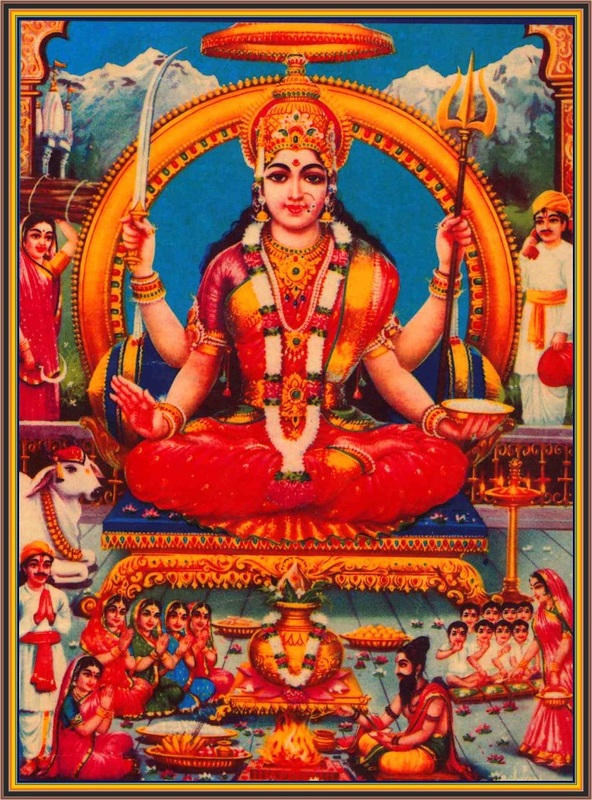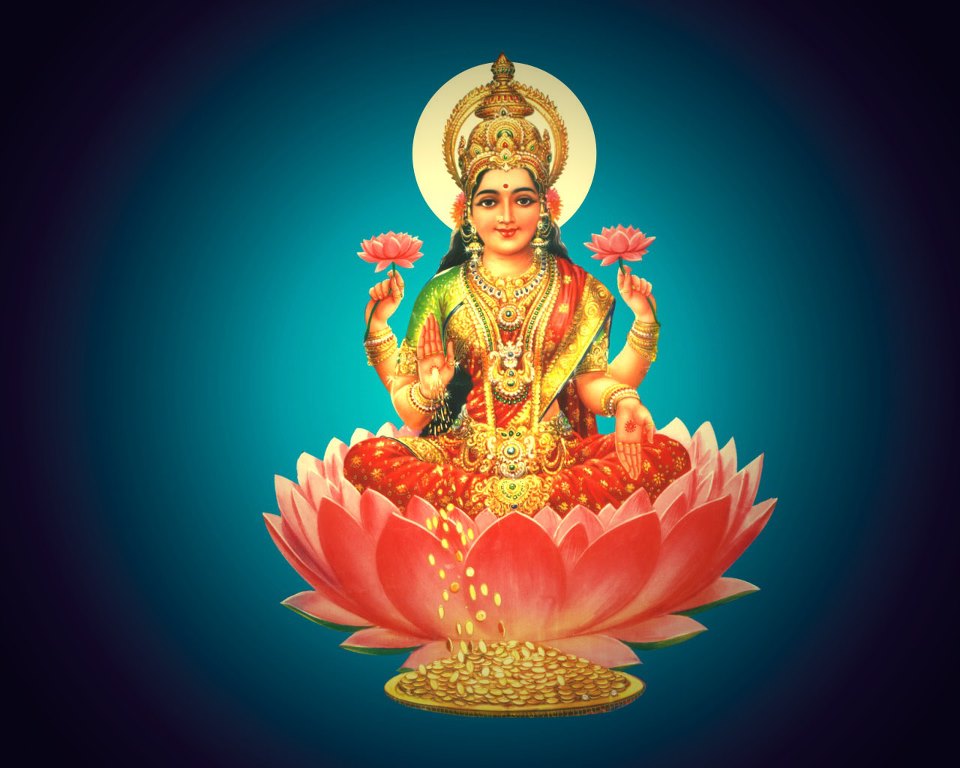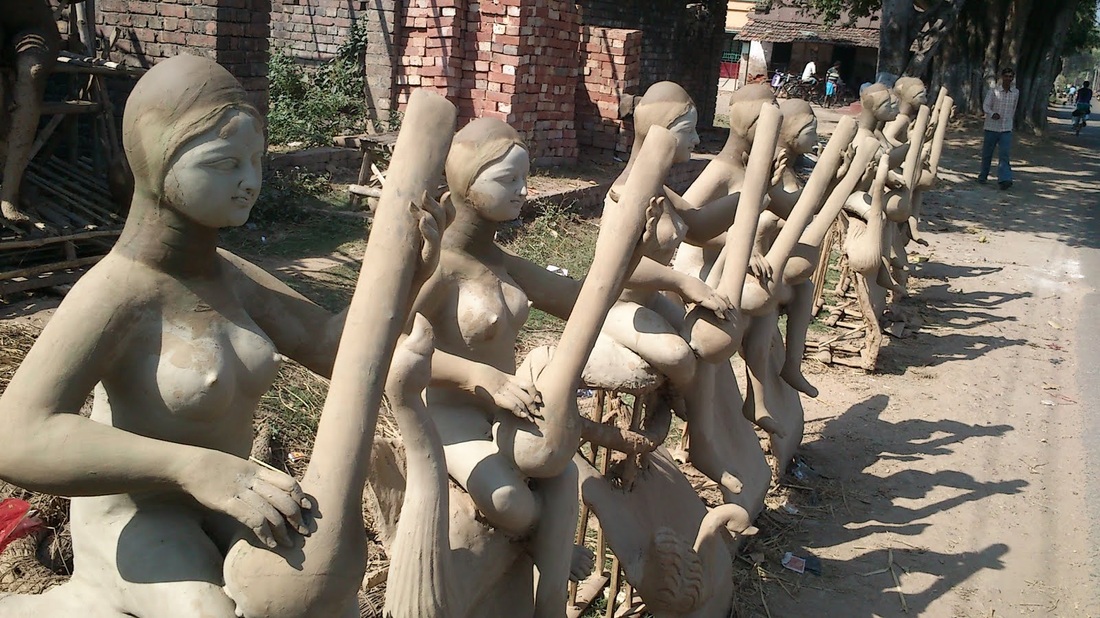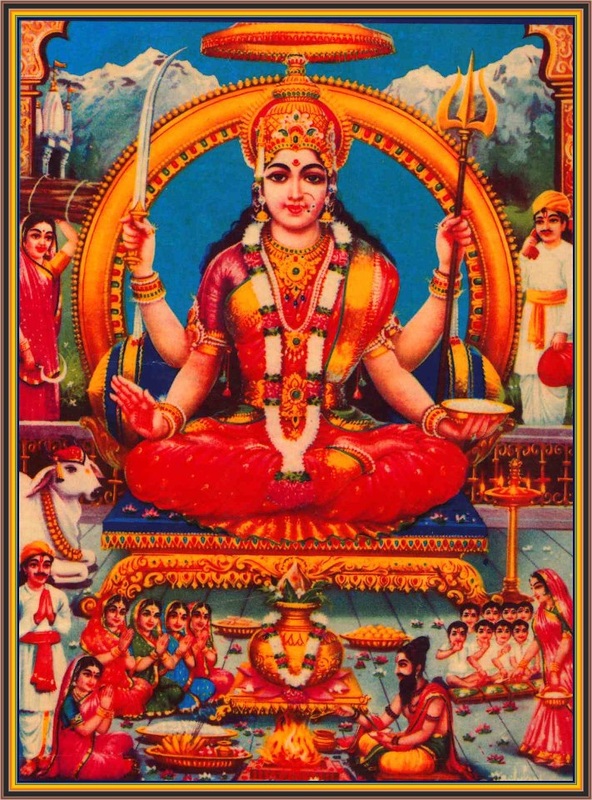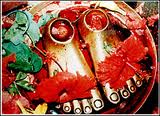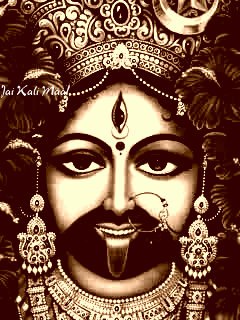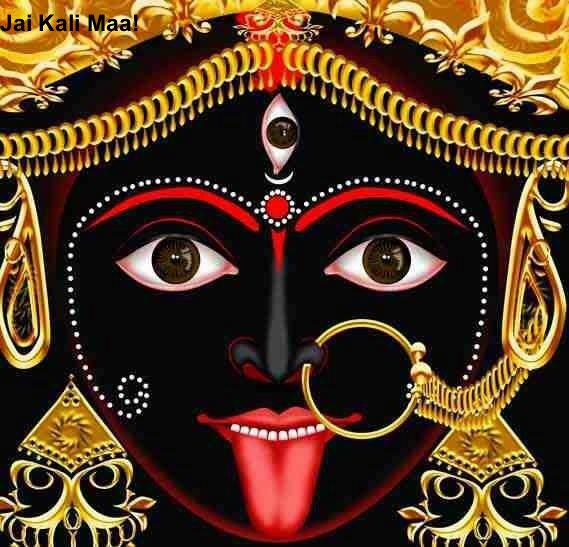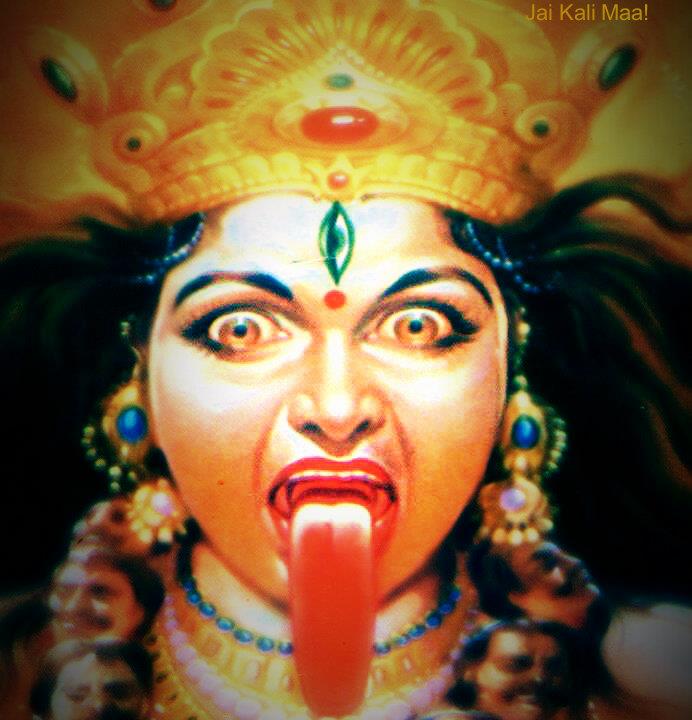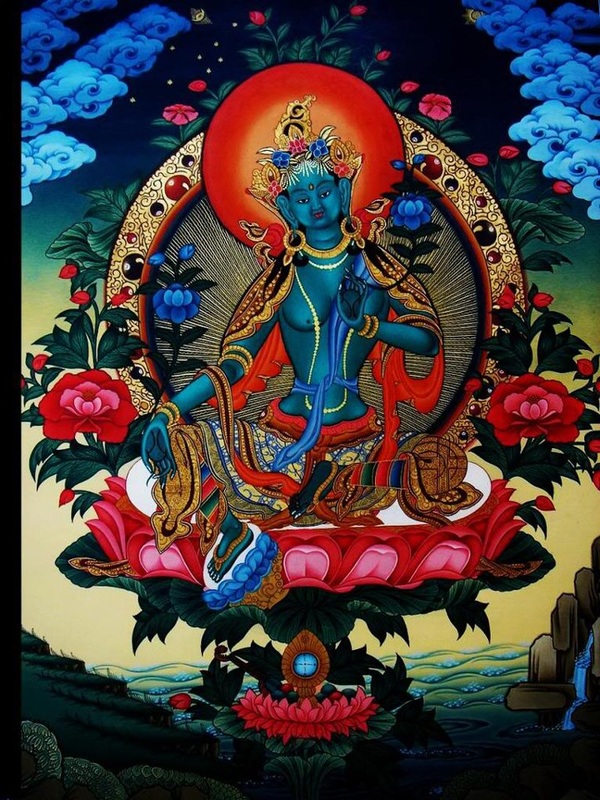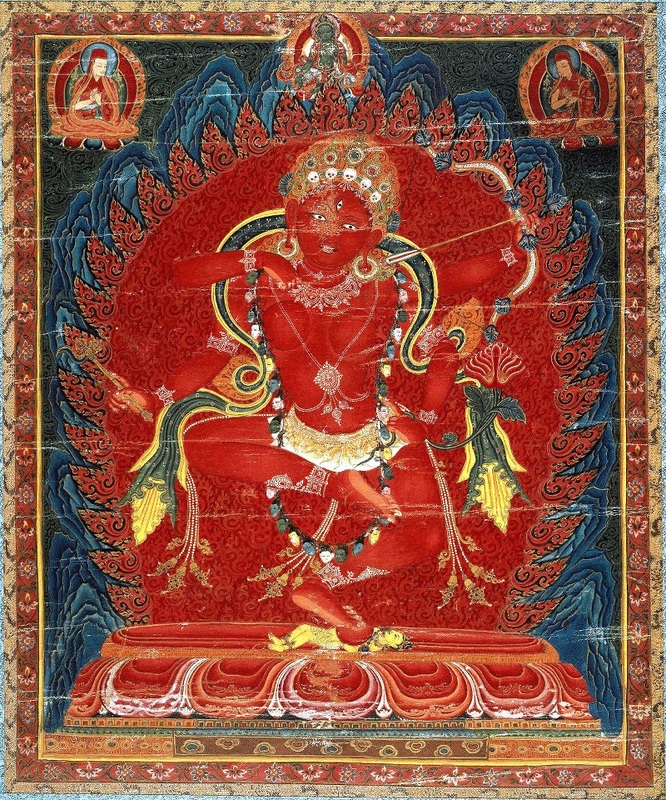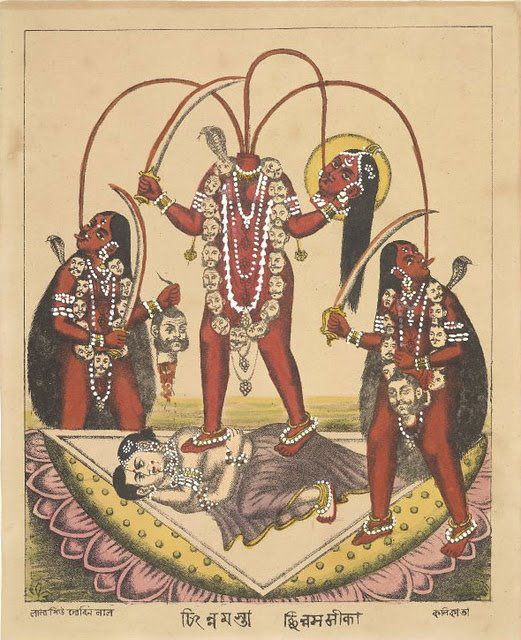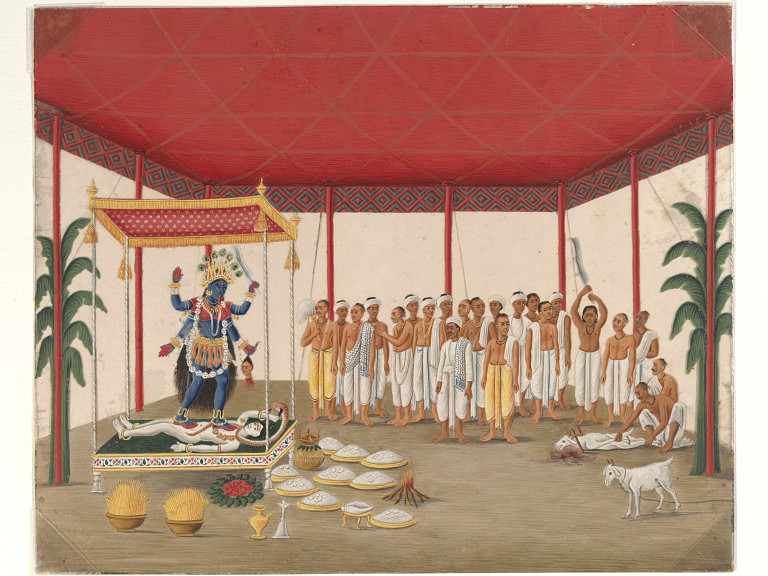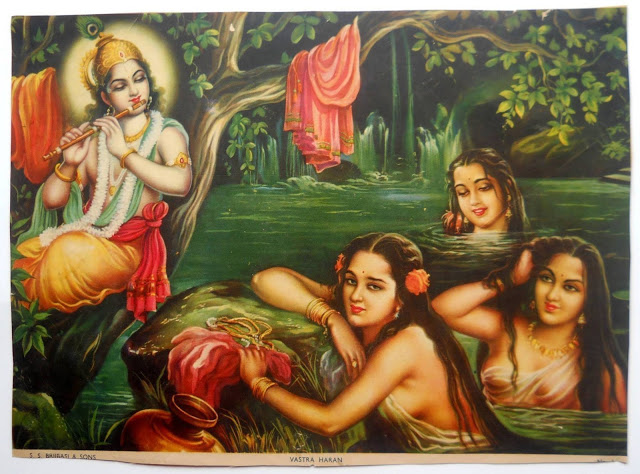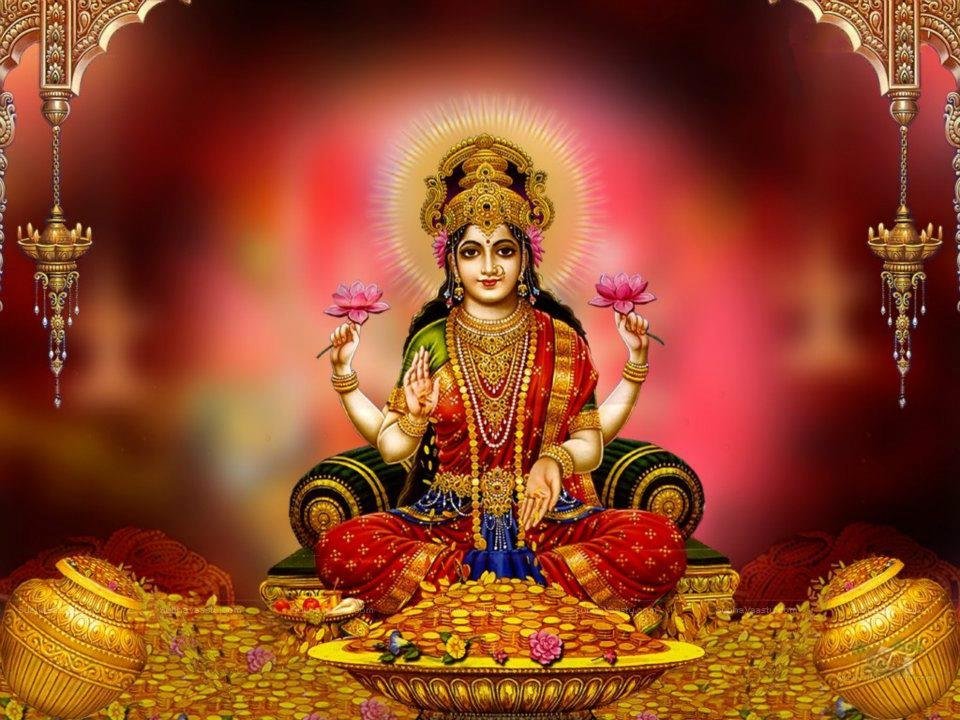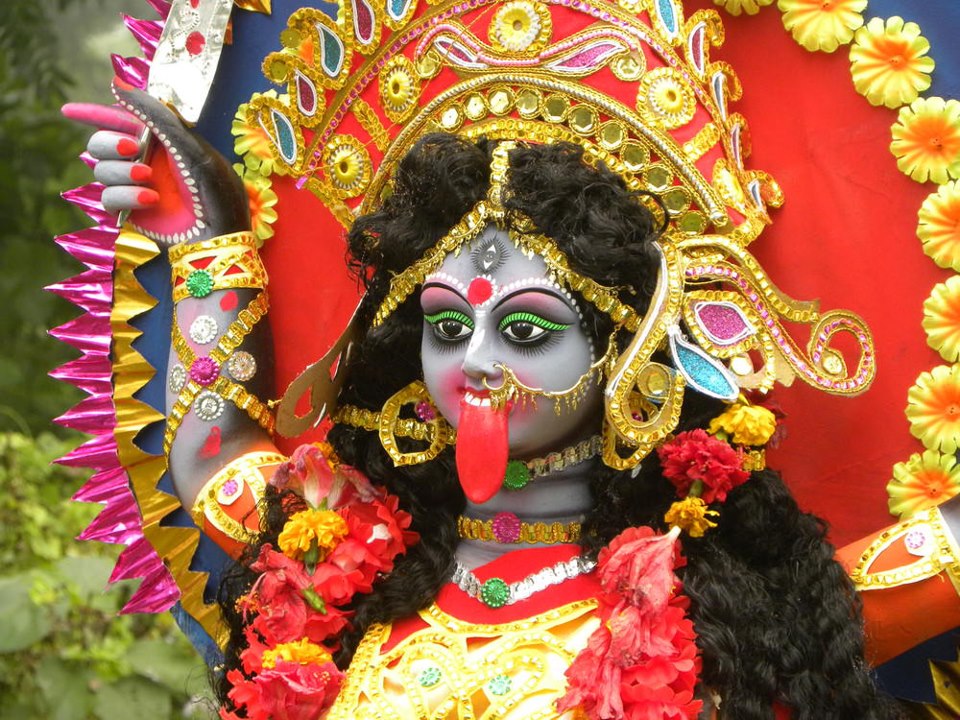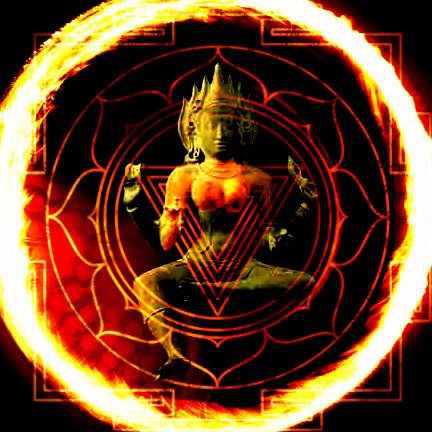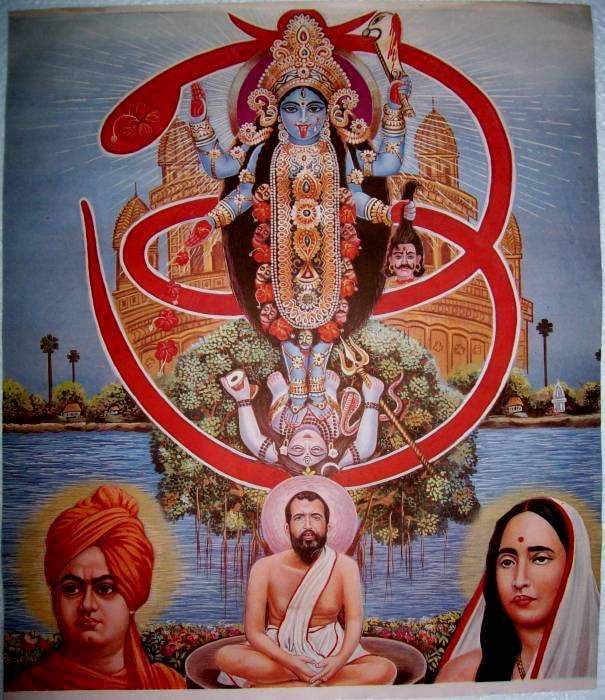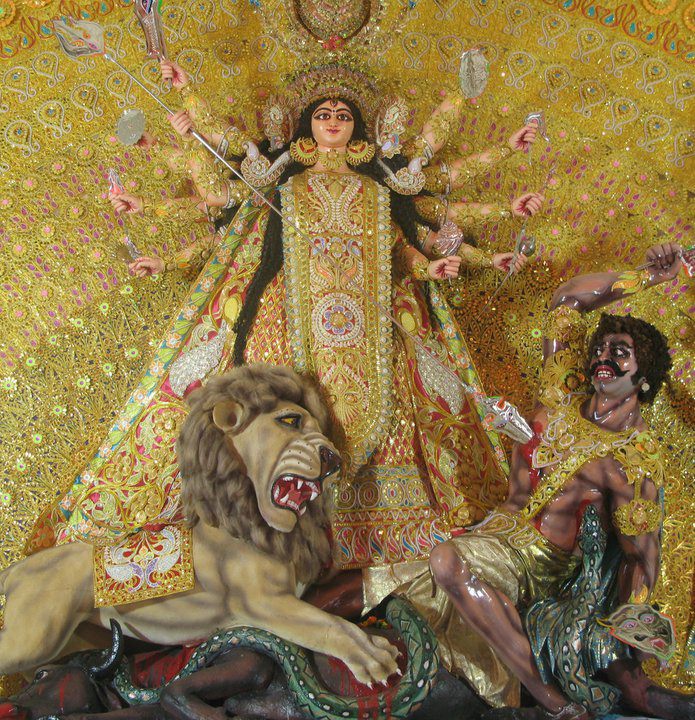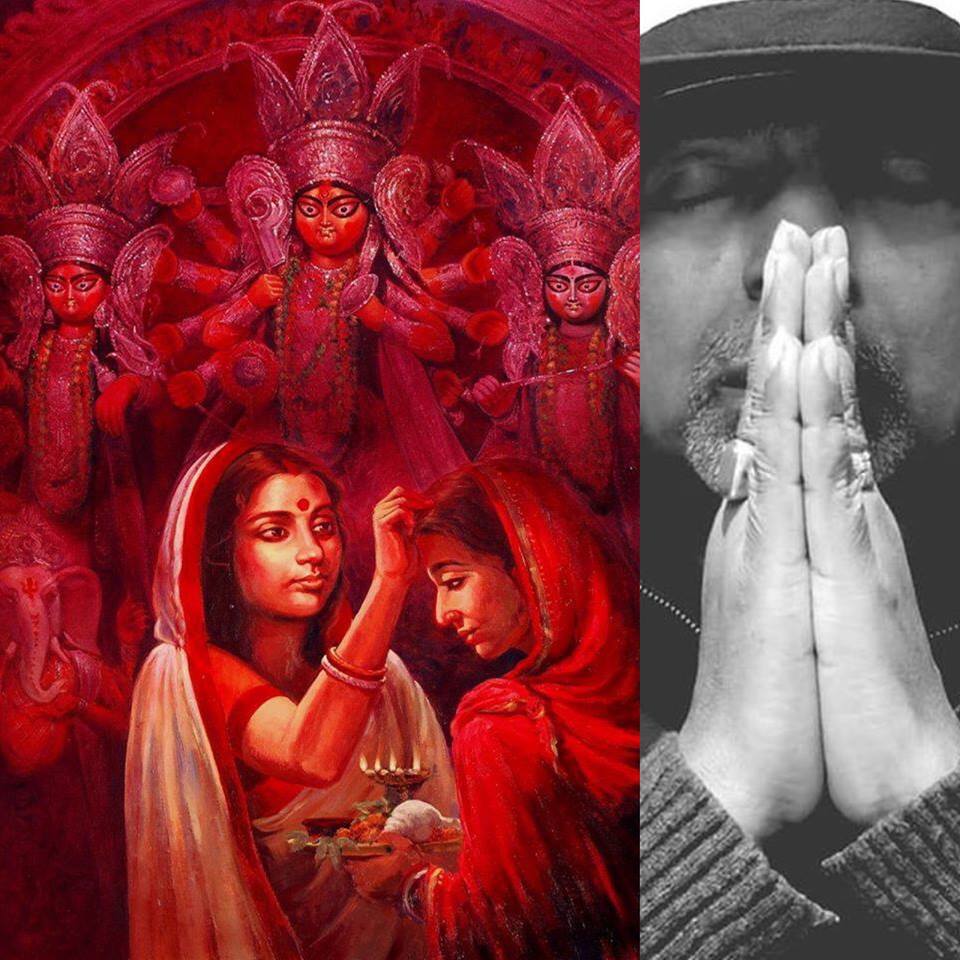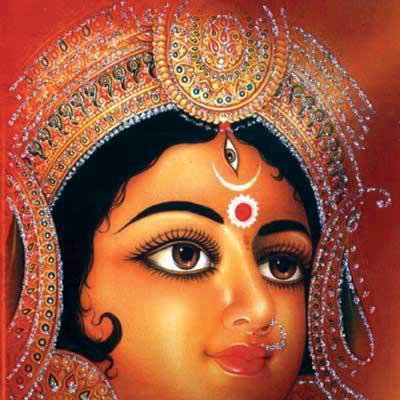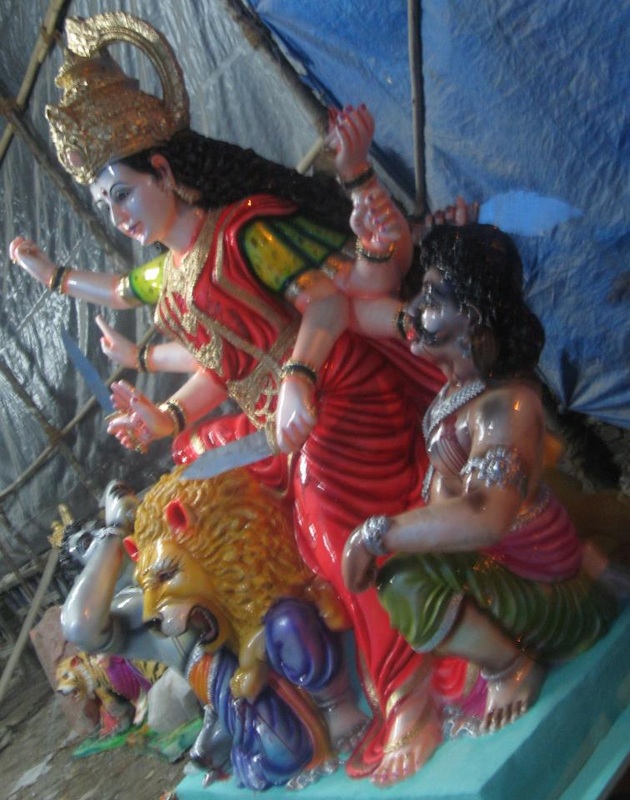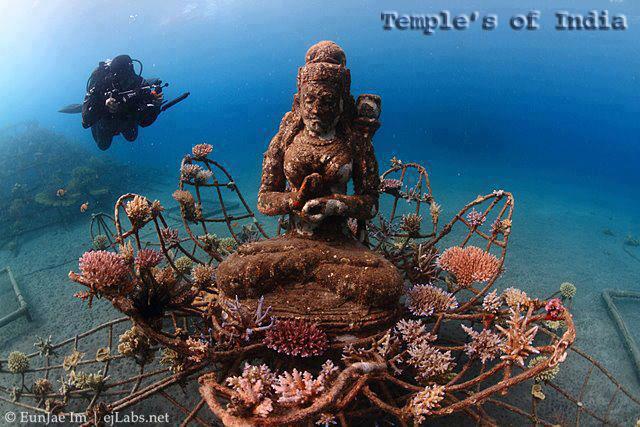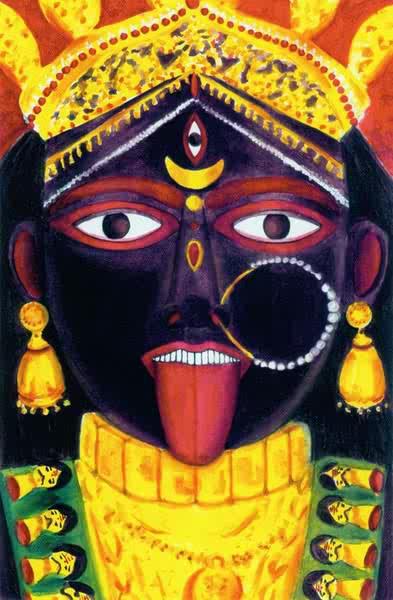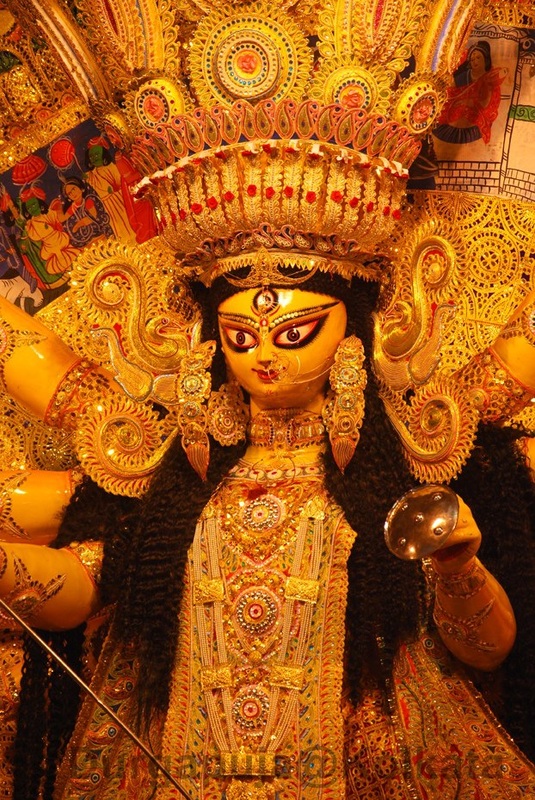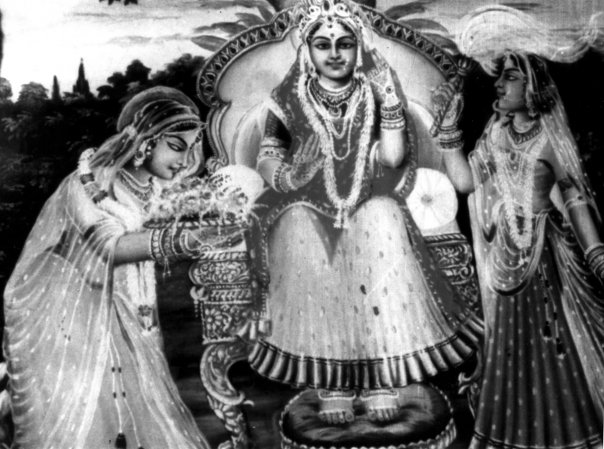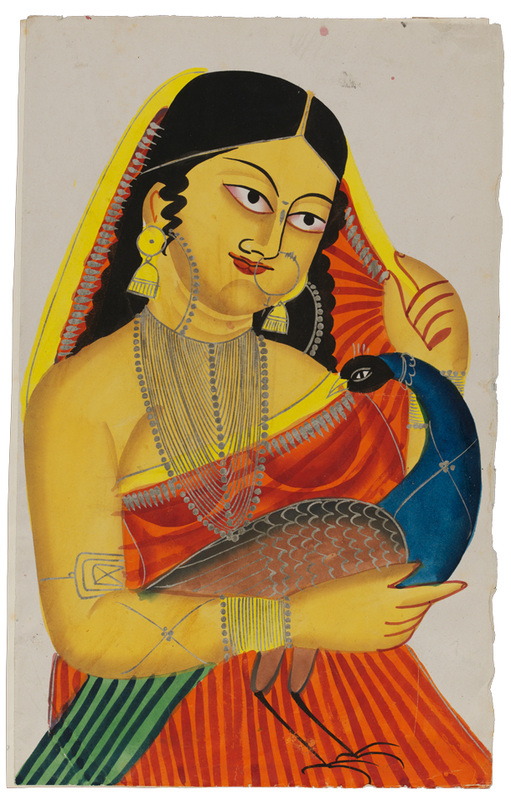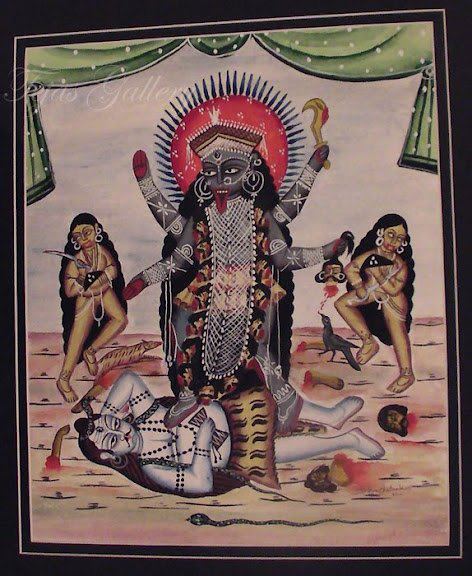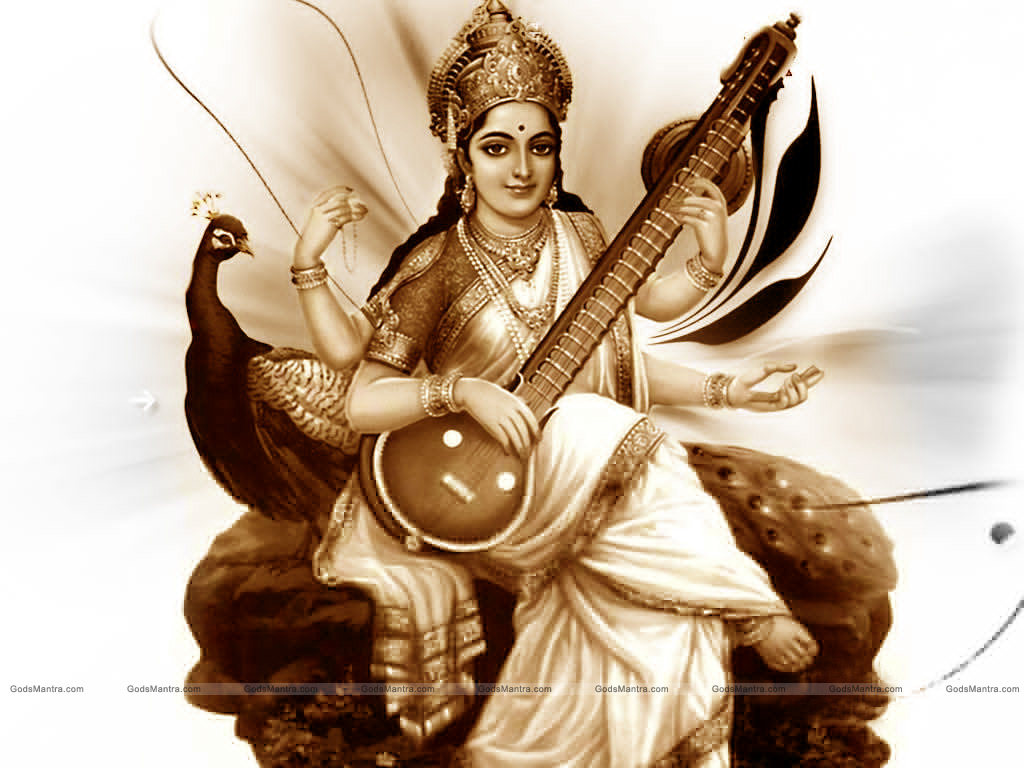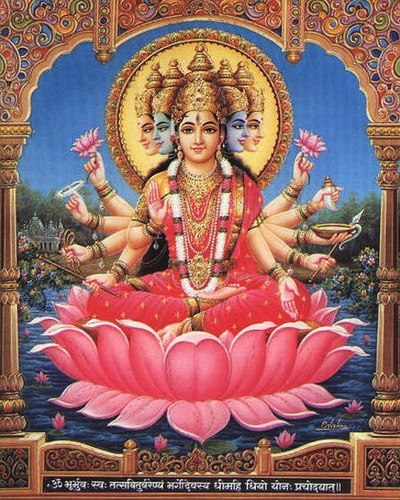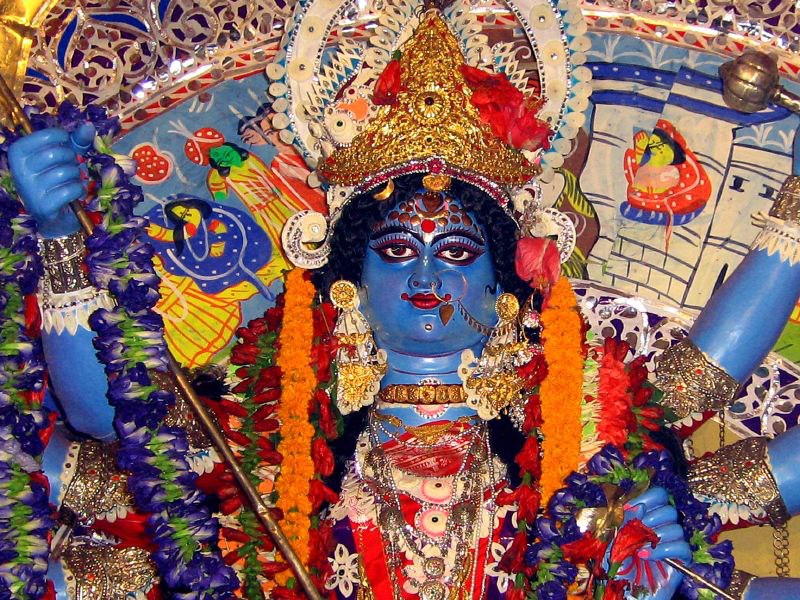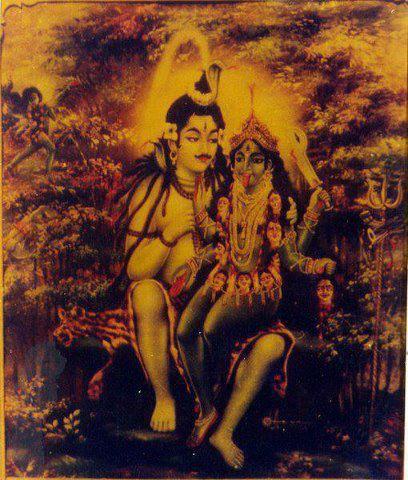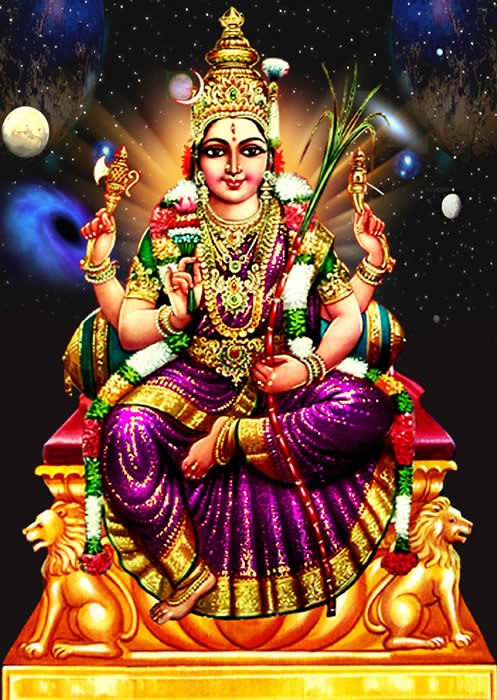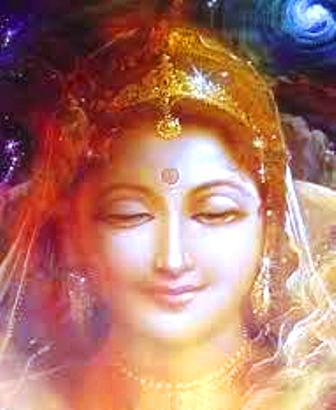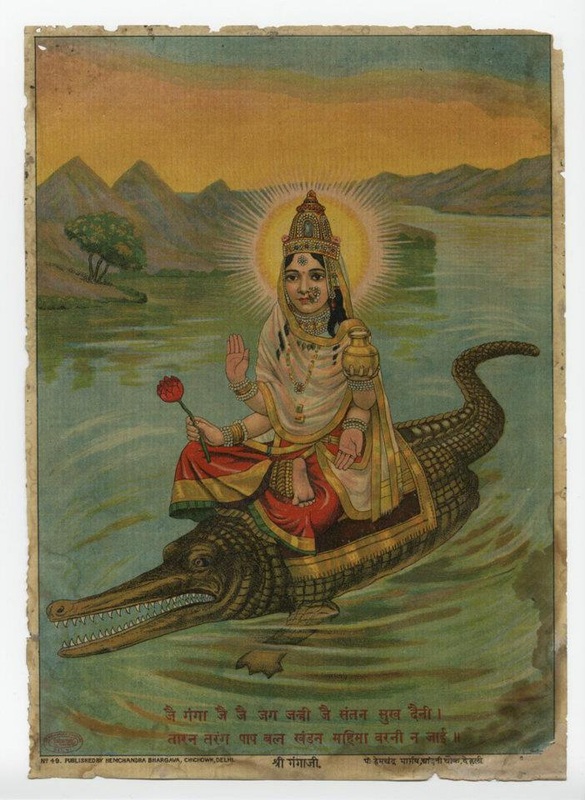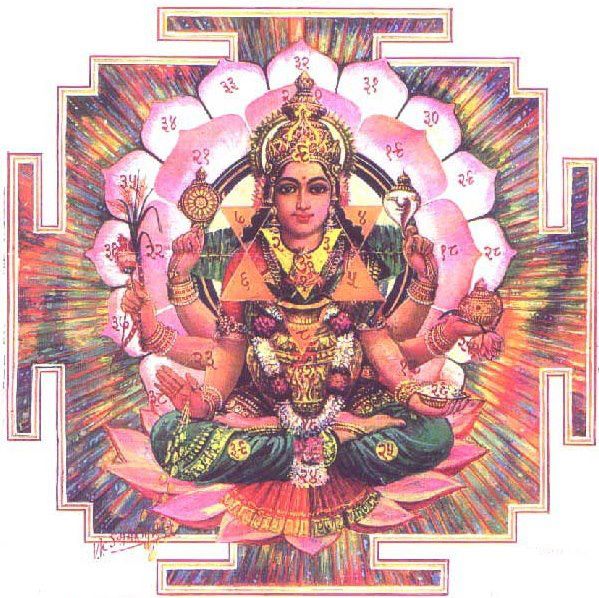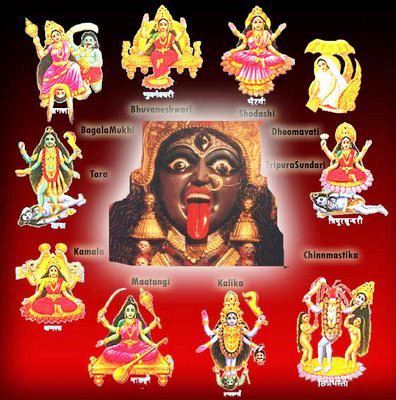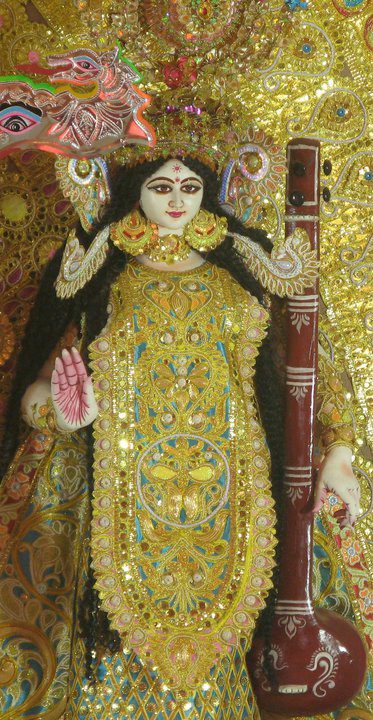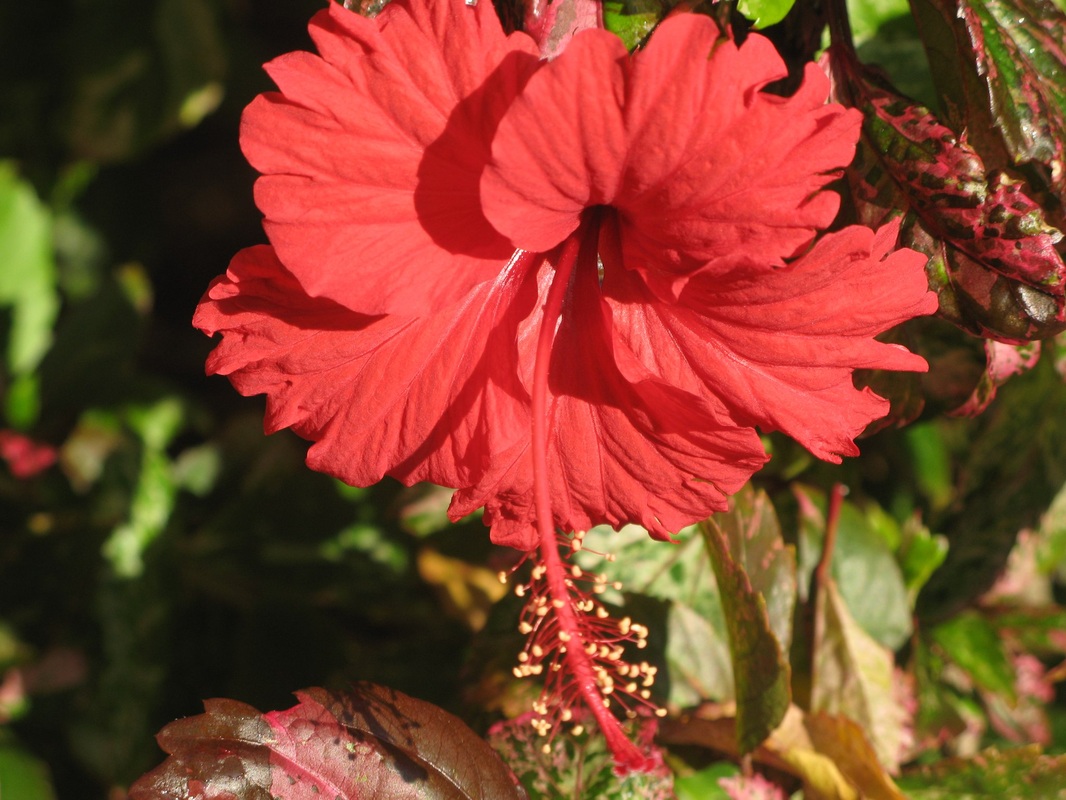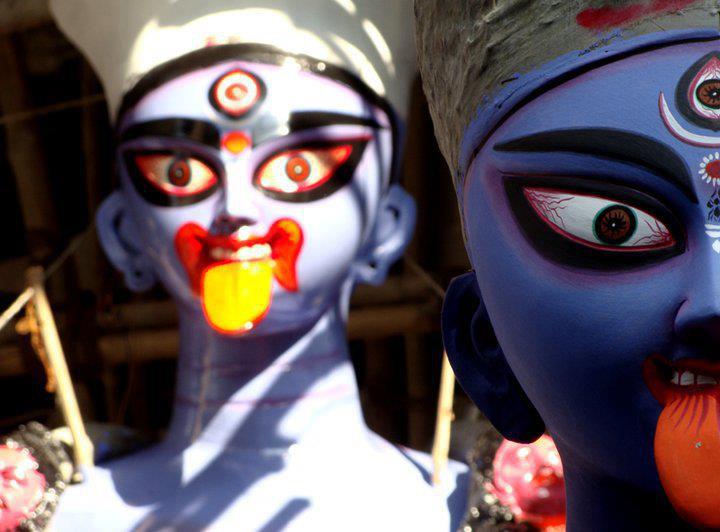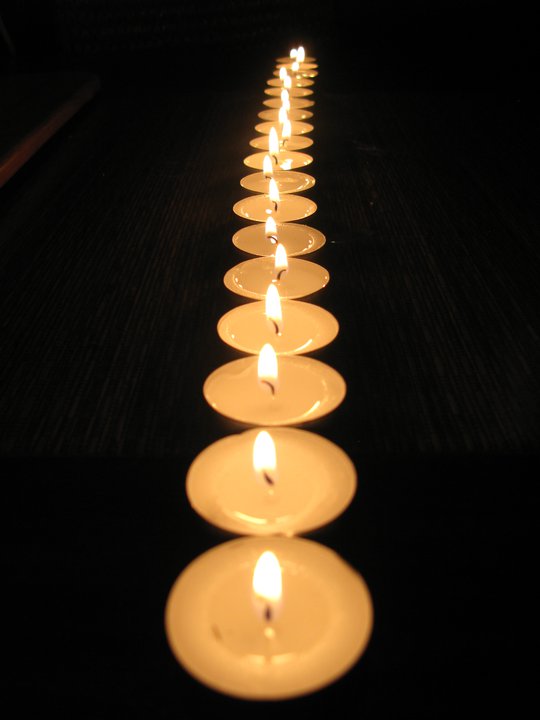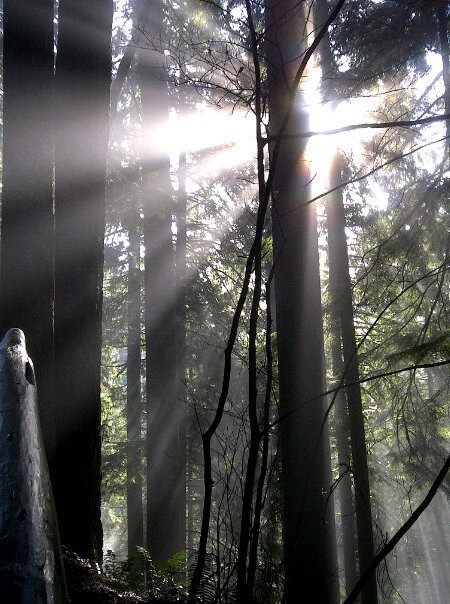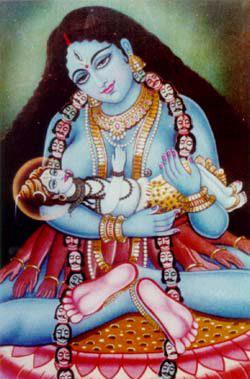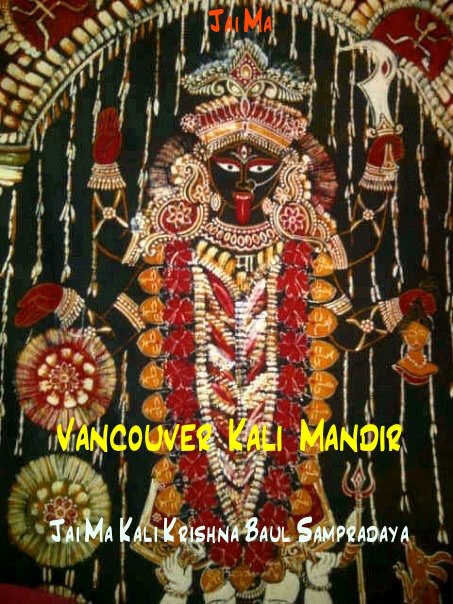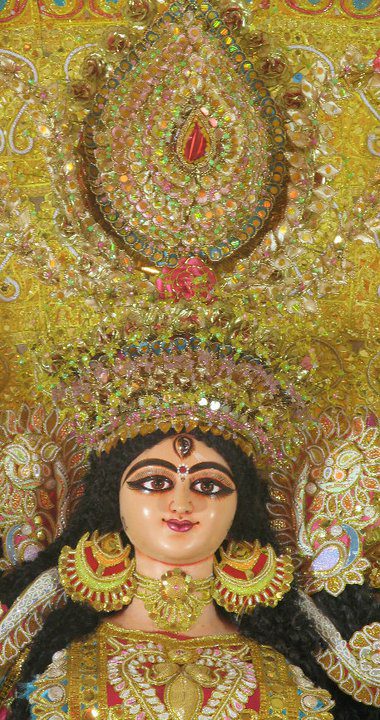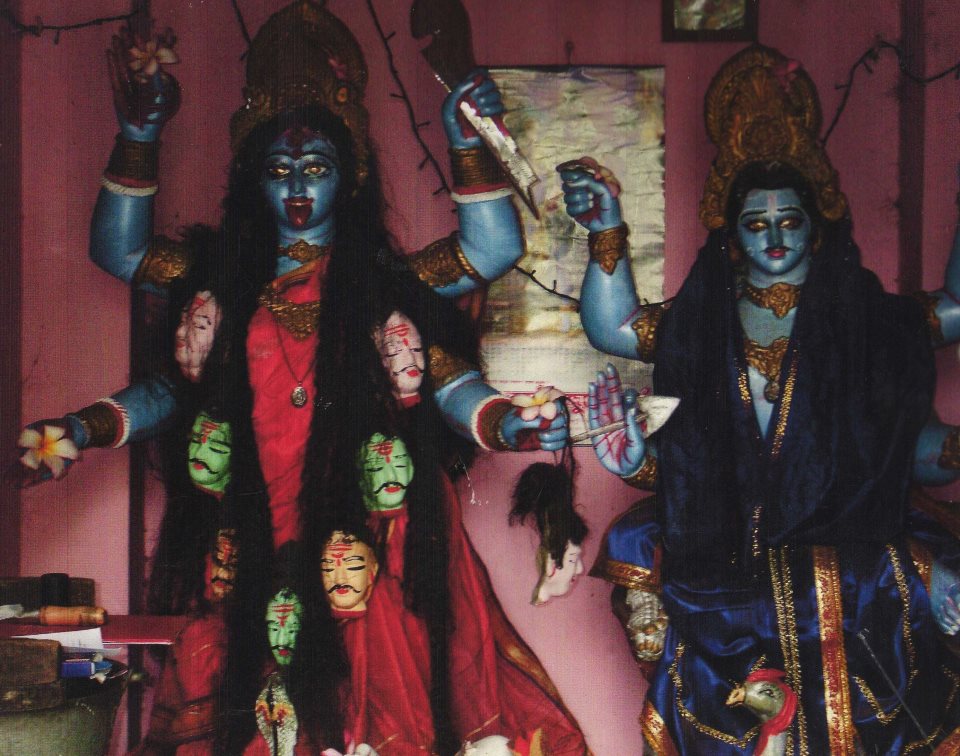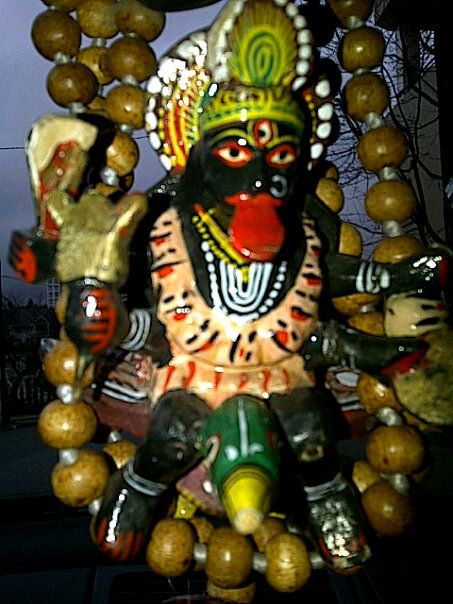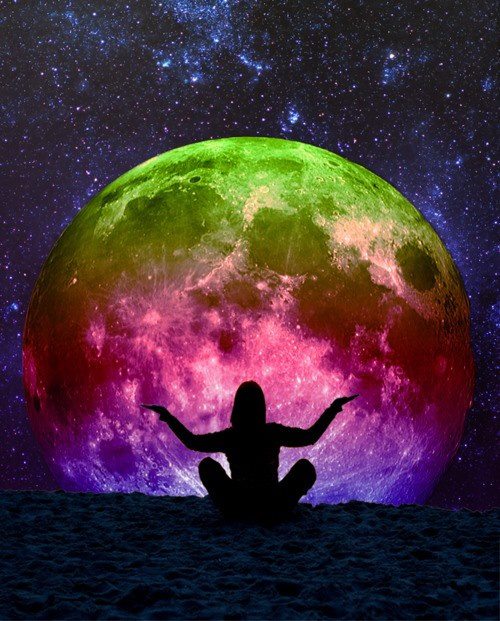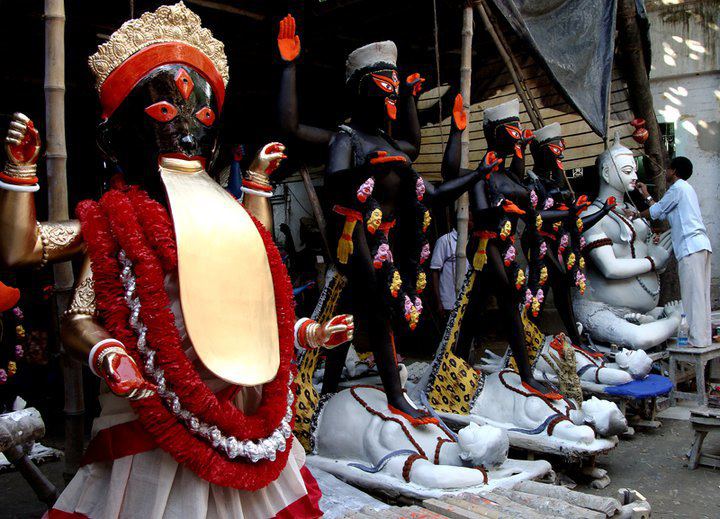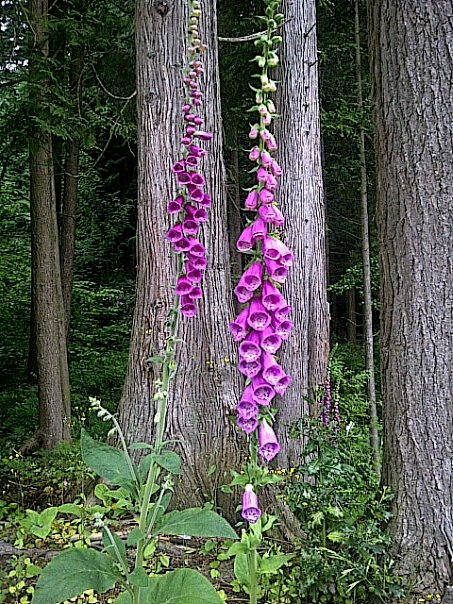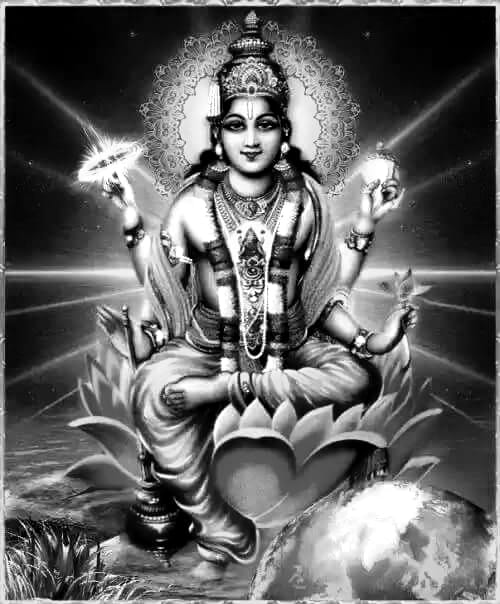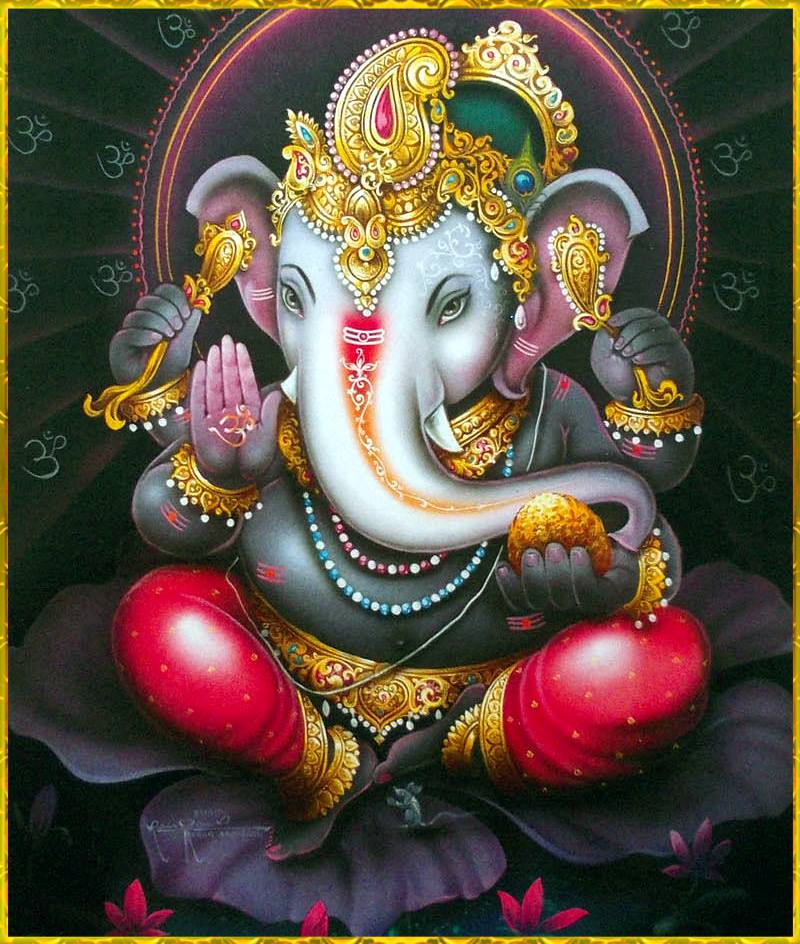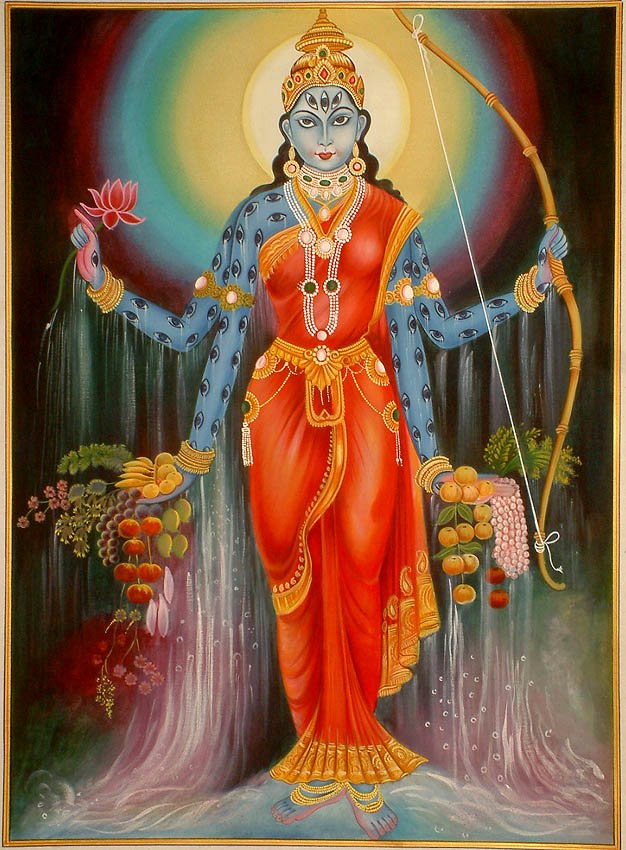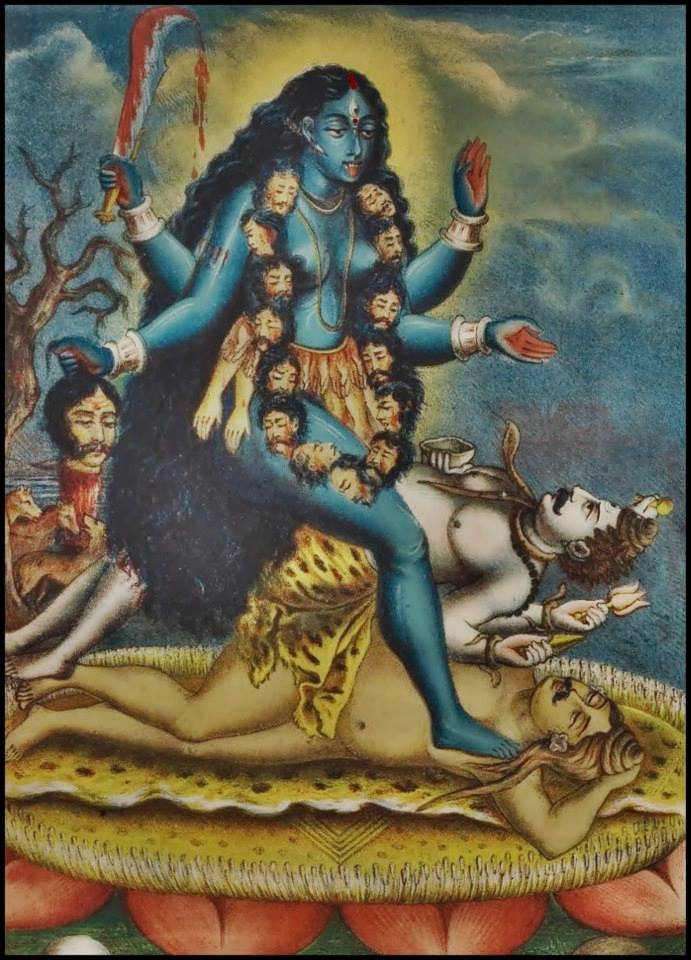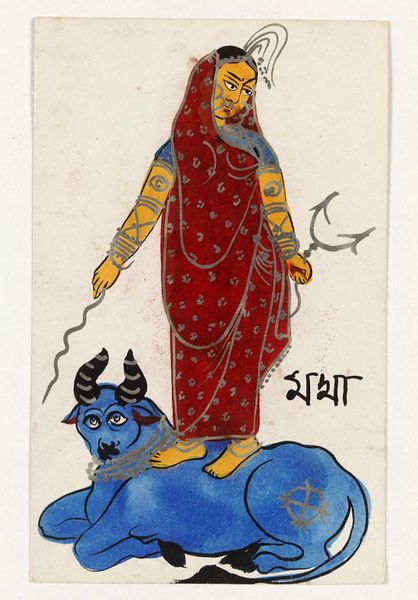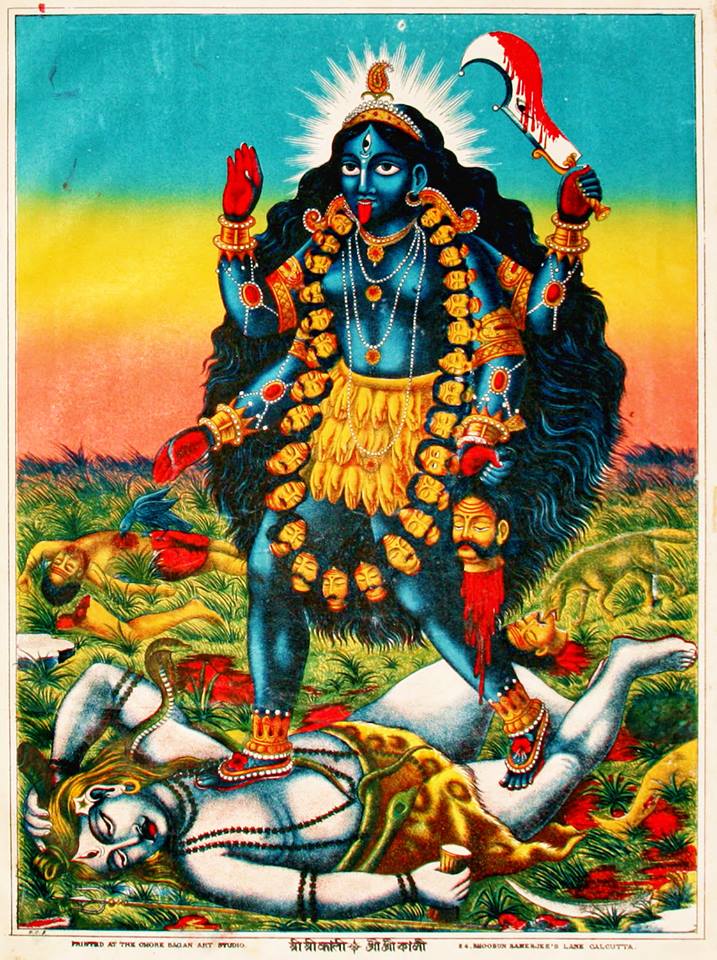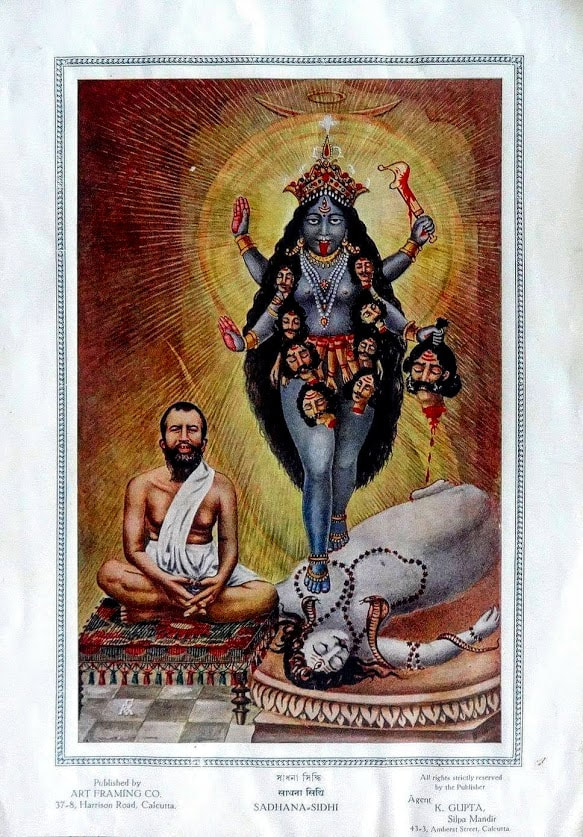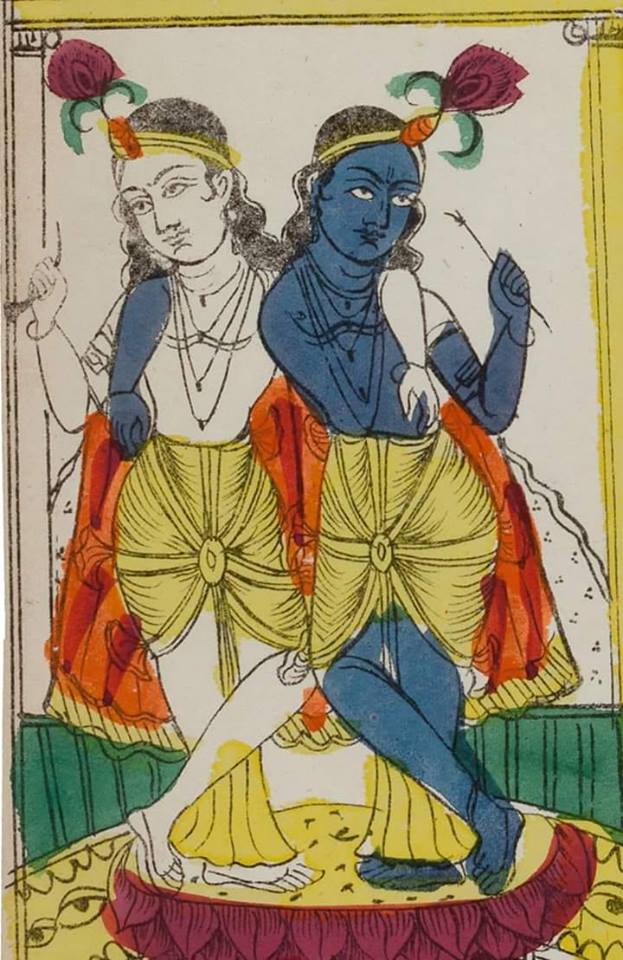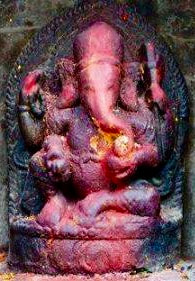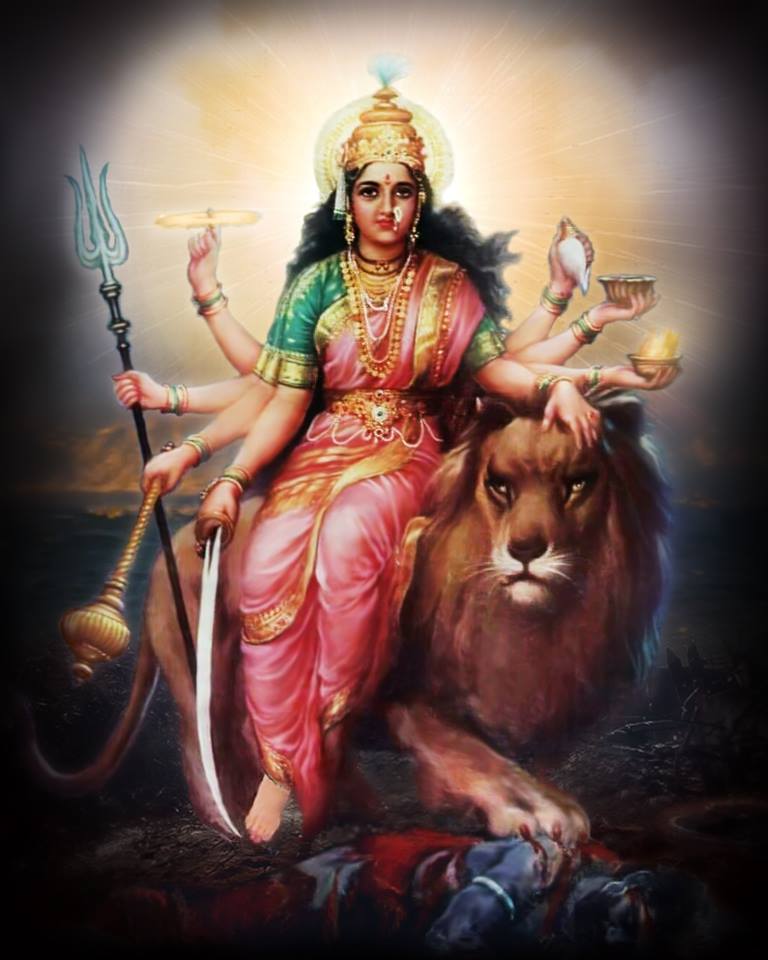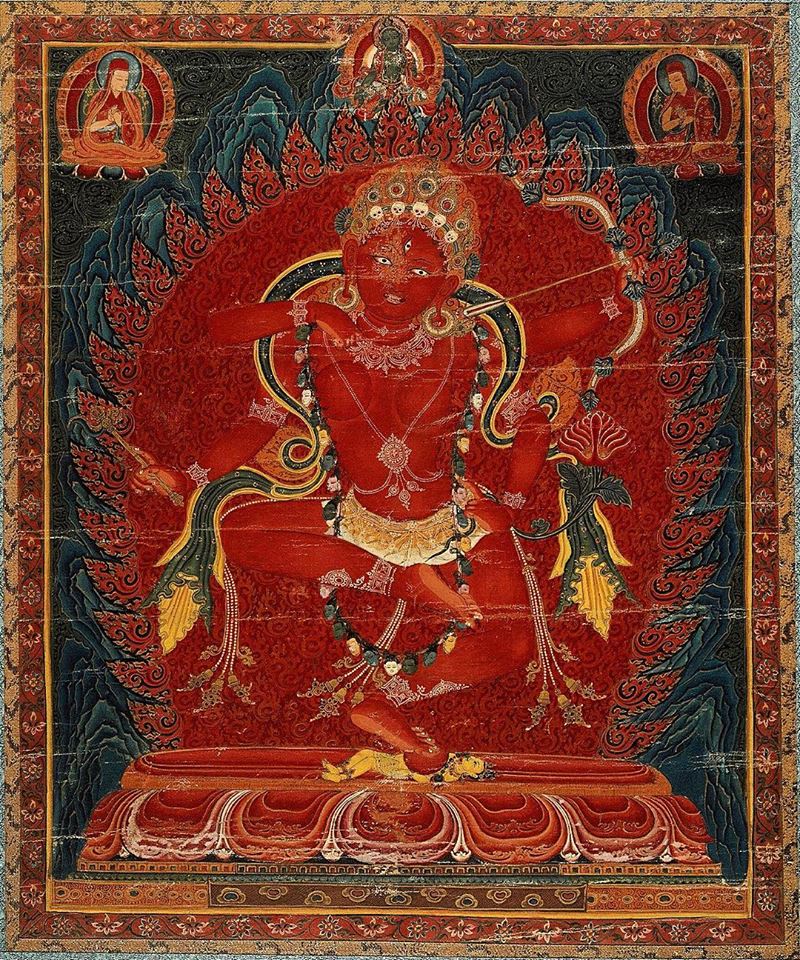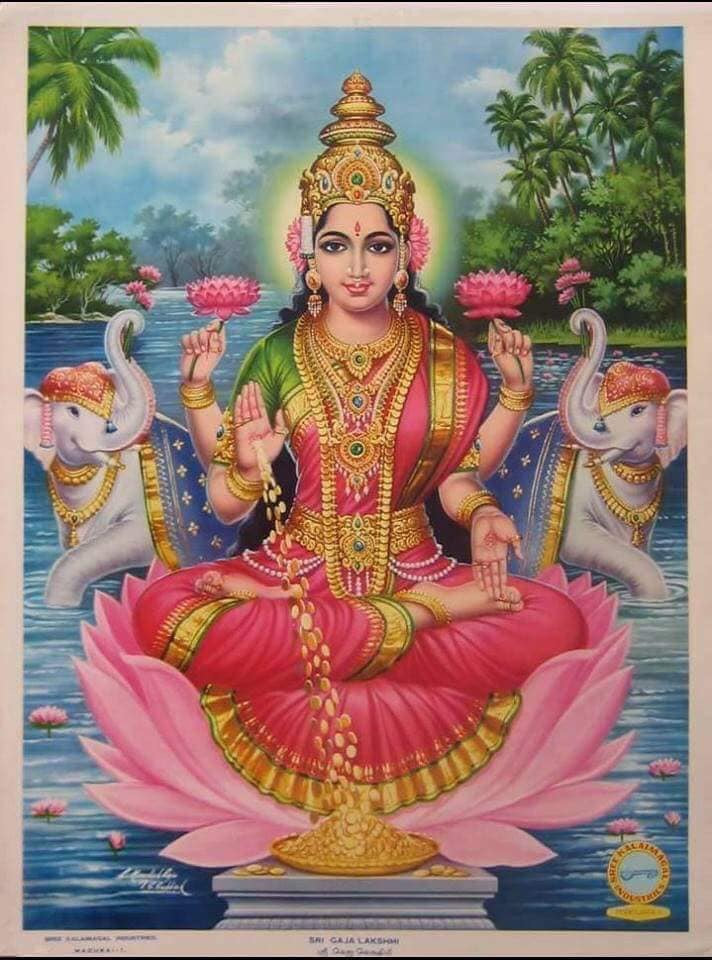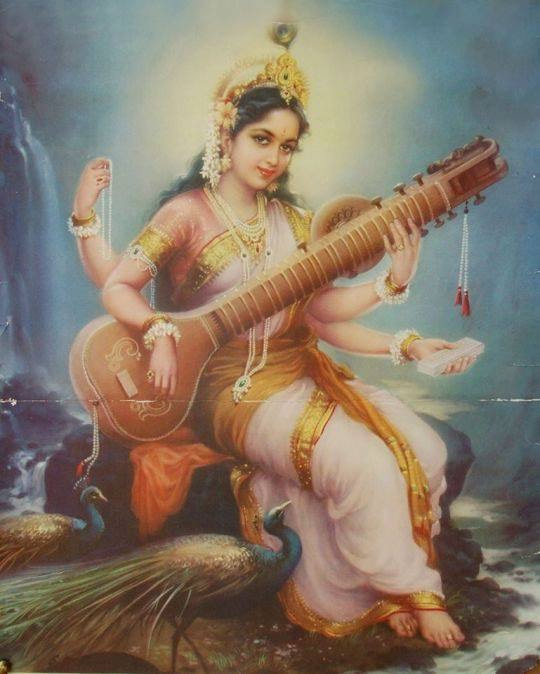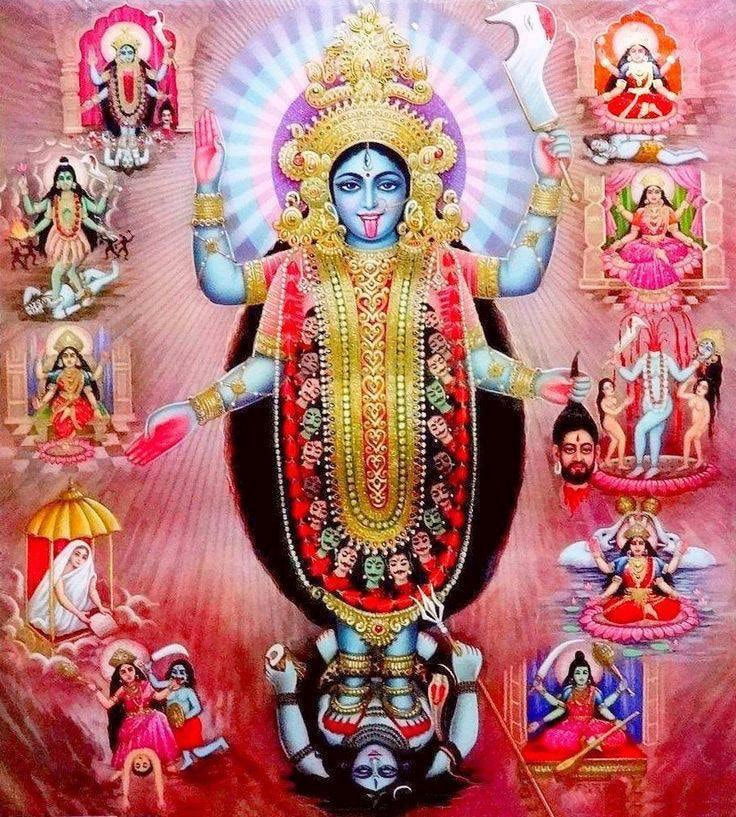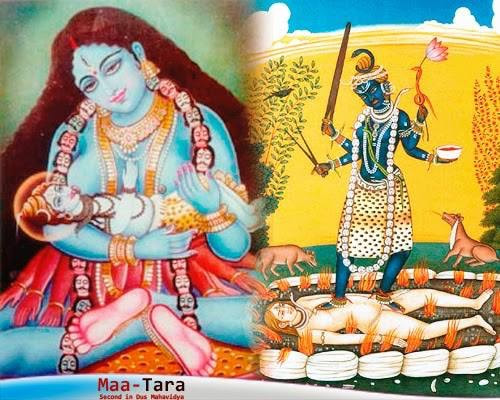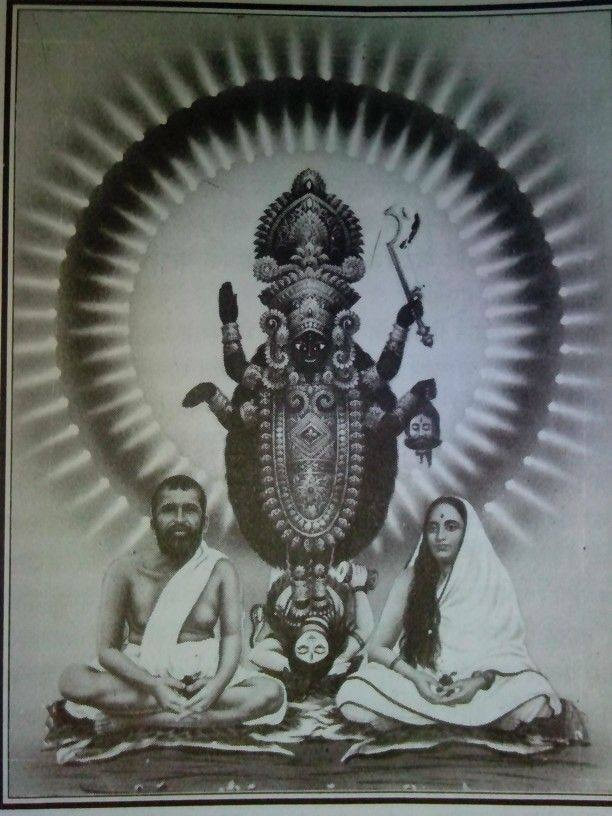http://www.suppressedhistories.net/
https://www.facebook.com/pages/Suppressed-Histories-Archives/333661528320
http://users.lmi.net/maxdashu/
"Restoring women to cultural memory, political analysis, spiritual awareness. Female icons and spheres of power, mother-right, patriarchies. Conquest, slavery, class and empire. Aboriginal philosophies, shamanic arts, seers, healers. And more"
The best links of Women's forgotten Her story on the planet, Suppressed History Archive by Max Dashu2/26/2013
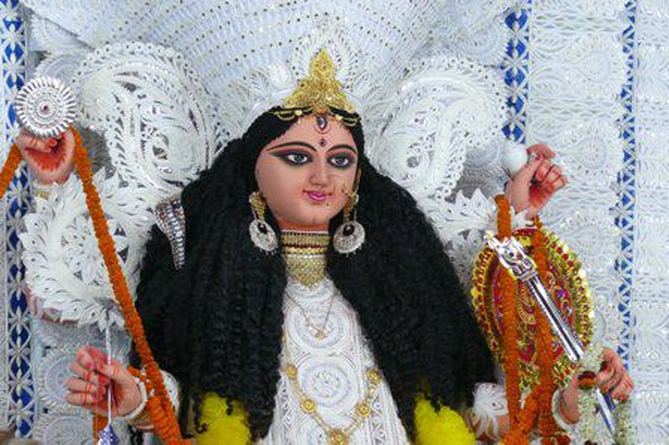 GODDESS JAGADDHATRI. Mother Durga is said to have assumed ten forms for the destruction of two demons, Sumbha and Nisumbha. Folklore and Puranas have different orders of this incarnation. The Markandeya Purana describes them as: 1. As Durga, she received the message of the giants; 2. As Dasabhuja, the ten armed, she slew part of their army; 3. As Singhavahini, seated on a lion, she fought with Raktavija; 4. As Mahishasuramardini, destroyer of a buffalo, she slew Sumbha in the form of a buffalo; 5. As Jagaddhatri, the Mother of the World, she overcame the demon army; 6. As Kali, the Black Goddess, she slew Raktavija; 7. As Muktakesi, with flowing hair, she overcame another set of demon army; 8. As Tara, the Saviour, she slew Sumbha in his own proper shape; 9. As Chinnamustaka, the Headless, she killed Nismbha and 10. As Jagaddhatri, the golden colored lady renowned through the world, She received the praises and thanks of the Gods. In iconography, Mother Durga is represented as a golden colored woman with a gentle and beautiful countenance. She has ten arms ; in one hand she hold a spear, with which she is piercing the giant Mahisha ; with one of her left hands she holds the tail of serpent, with another the hair of the giant whose breast the snake is biting ; her other hands are filled with various weapons. Her lion leans against her right leg, and the giant against her left. The images of Lakshmi, Sarasvati, Kartikeya, and Ganesa are frequently made and worshipped with that of Durga. The frontispiece is a representation of Durga and the other goddnesses and gods, as they are made in Bengal at the time of the great autumnal festival. In Bengal the worship of this Mother Goddess forms the most popular of all Hindu festivals. Jadaddhatri is very similar to Singhavahini; the difference is only the weapons she wields. Mother Jagaddhatri worship is also traced to West Bengal, where Her cult is traced to Tantra. Shaktam extends her names to Karidrasuraranisuduni, Slayer of the elephant demon; Mahesvari, the Great Goddess and Shaktacharpriya, the Goddess who loves to be worshiped according to Shaktism and Tantra. In Kolkata, Jagaddhatri Puja is a major event. This follows after Durga and Kali Puja. The Puranic and Tantric description of Jagaddhatri shows Her dressed in red garments and seated on a lion. Her body is shown as the color of the morning sun. Mother is three eyed and four armed. Jagaddhatri is hardly fierce. She is attributed to sattva while Durga and Kali symbolize rajas and tamas respectively. When she is four armed, then she carries the chakrs, conch, bow and arrow. In the Singhavahini form, she carries a sword and spear and with two hands encouraging her bhaktas. In all forms, Jagaddahtri is represented as a mild, fair, beautiful, gentle looking lady. She symbolically stands on Karindrasura, the elephant demon to be in control of the frantic elephant called ‘mind.’ Sri Bhagavan Ramakrishna Paramahamsa pays tribute: “Jagaddhatri is the Holder of the World, the Jagat. If She wouldn’t, the World might fall down. "I hail Thee, o all-pervasive Jagaddhatri Durga, Thou art victorious and symbol of the joys of the world; it is only Thou in the world, who can be worshipped properly. Victory to Thee”. MYTHOLOGY: Reality and power of Jagaddhatri is highly metaphysical blending the Upanishads and Puranic lore of Hindu scriptures. The Devas become egoistic thinking it was their weapons that was used to slay the demons. It took some time for Truth to dawn on them that their powers are in reality not their own but derived from the Supreme Power who as protecting Mother holds the entire creation called Jagaddhatri. The tale and Upanishadic explanation from the Kena Upanisha is best said in the words of Swami Sivananda. “Once Brahman won victory for the devas. But unknowing the devas were proud of victory. Thought they, "Ours alone is victory and to us only belongs all the glory." Brahman knowing their vanity appeared in front of them as an Yaksha (ethereal spirit). But they did not know who that great Yaksha was. So they said to Agni, "Jataveda, know well what this Yaksha is." And as requested Agni agreed. He rushed to the Yaksha and the Yaksha (Brahman) asked, "What power do you have and of what nature?" And Agni replied," I am Agni (fire), the omniscient. I can burn all that is on earth." Then Brahman placed a blade of grass in front of Agni saying, "Burn it." Agni rushed to it with all his strength, but could not burn it. He returned to the gods saying," What the Yaksha was I could not find." So they said to Vayu (the wind) " O great Vayu, go and find out what this great Yaksha is and from where ." And as requested Vayu agreed. He (Vayu) rushed to the Yaksha and Brahman asked him who he was. Replied Vayu," I am Vayu. I am really the master of all skies." And Brahman enquired," What is the nature of your power in you." And replied Vayu, "All this, whatever that is here , I can blow away." Brahman placed before him a blade of grass saying, "Blow it away." Vayu approached it with his full might, but could not move it even a little. He too returned to the gods saying, "I could not find that which this Spirit is." Then the gods requested Indra, "Chief of gods, find out for us this great Spirit and from where." But as he approached, the Spirit disappeared. And at the very same spot in the sky appeared extremely charming Uma Haimavati (daughter of Himavat). He (Indra) asked her who the great Yaksha was. "Indeed It was Brahman," she replied. "Through Him alone you all achieved victory." Then only Indra could discern who the incredible Brahman was. Therefore Agni, Vayu and Indra are verily above all other gods, for they alone went nearest to Him and were the first to know Him as Brahman. And therefore Indra of the three above all others for he alone went nearest to Brahman and was the first to know Him as Brahman (from goddess Uma). Now this is the instruction regarding Brahman, (envision Him) as he appeared before the gods, shining like a lightning and disappearing within the winking of an eye. Now this is another instruction regarding Brahman, (envision Him) think of Him mentally as the microcosm (Atman) within the body as Atman. Now Tadvanam is the name upon which He is to be meditated or worshipped mentally. He who knows Him in this way is extremely loved by all living beings. The disciple asks, "Sir teach me Upanishad." And the master replies," The Brahman of Upanishad is explained to you. That knowledge of Upanishad we have imparted to you." "Austerity, control and sincere effort are the foundations on which it (knowledge of Brahma) rests. The Vedas are its limbs and Truth is its abode. Verily he who knows it thus cleanses all his sins and becomes established in the vast heavenly and the highest state of Bliss. Yes he is certainly established.” It is said that anyone worshipping Mother Jagaddhatri is free of ego and becomes a true seva of the world. 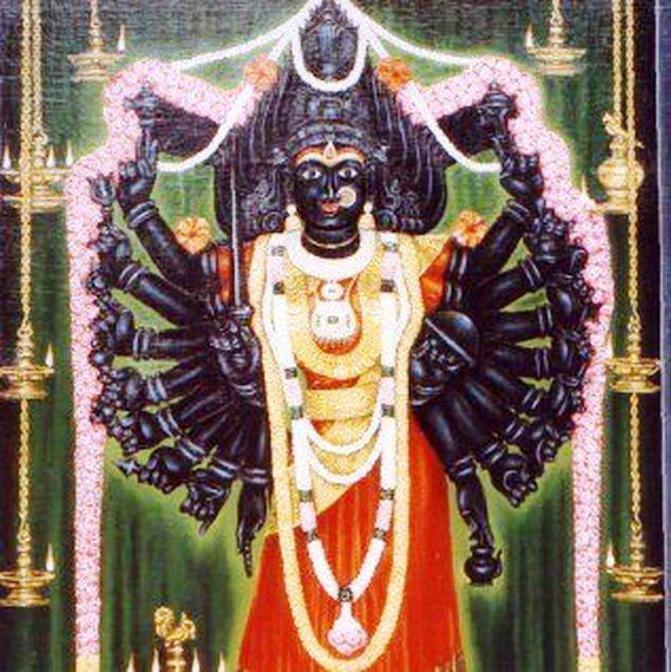 MOTHER GODDESS CHANDI is the name by which the Supreme Goddess Durga is referred to in Devi Mahatmyam. Chandika or Chandi and Chamunda infer the violent and impetuous One, the fierce manifestation of Shakti, the symbol of feminine power. This epithet is literally unknown other then the mention in Markandeya Purana. The reasoning is this. Early Puranic works, the Ramayana and Mahabharata were Sanskrit works. Chandi as a deity belonged more to Bengal and South Indian tradition. In the the Southern tradition, Mother is referred to as Chandi Chamundi with a rural setting. Both Bengal and the South were powerhouses of the Shakta tradition following Mother Goddess worship. By the time of Markandeya Purana, Tantric sadhana had also taken off and Chandi had become a common epithet. DEVI MAHATMYA is a religious text glorifying the victory of Durga over the demon Mahisasura. It is Part of the Markandeya Purana. There are twenty nine mentions of Chandi or Chandika in this Purana alone. Chandi, Chandika, Ambika and Durga are also synonymously used. Traditionally, it is viewed that Mahatmyam attempts to unify the male pantheon Hindu gods with the pre-existing Mother Goddess Cult or Shaktam and define divinity as a female principle. Mahatmyam is also known as Durga Saptashati or Chandi Path. ‘Saptashata’ means 700 verses arranged into 13 chapters. The ‘path’ here is not route, as is sometimes wrongly written but ‘patha’ which means reading. The Tamil word for this is ‘paadam’ which also takes another meaning of ‘at feet of.’ DEMONS: Durga is associated to the killing of several demons by taking the form of Chandi. As Singhavahini, Chandi rode on a lion, fought with Chanda and Munda. She has four arms. She drank the blood of the demon leaders and devoured a large part of their troops. Mahishamardini is the slayer of the demon Mahisha. She also slew demons as Shumbha and Nishumbha and attacked them in the frm of a buffalo. She had eight or according to some accounts, ten arms. There is little to distinguish the account of this form with that of Durga. ICONOGRAPHY: Chandi or Chamunda appear as black or red complexioned wearing ‘mundamala’ the garland of severed head skulls. She has up to twelve arms. She holds a damaru, trishula, sword, a snake, khatvanga- skull-mace, thunderbolt, a severed head, kapala-the skull cup and panapatra, the drinking vessel. She is shown standing on a ‘shava’ or corpse or seated on a ‘pretasana’ or defeated demon. She is often portrayed in horror: Her skull cup is filled with blood. She has a skeletal body with three eyes. Her face is terrifying with protruding teeth, long nails. Her socket eyes are described as burning the world with flames. Her breasts are shown dropping with a sunken belly. Bones, skulls, serpents and scorpions, symbols of disease and death are her ornaments. Her headdress is the jata mukutta, the piled matted hair tied with snakes. She sdorns a crescent moon which she shares of Lord Shiva. She keeps company with fiends and goblins surrounded by fearsome jackals eating corpse flesh. Her vahana ranges from lion, tiger or owl. Her banner shows a fierce eagle. By and large Chandi and Chamunda depict the coming of old age, death, decay and destruction, the wholesome attributes of Rudra and Shiva in his destructive roles. Indeed these are symbols of rebirth and creation also. CHAMUNDA: Durga is also known as Chamunda Mata or Chandi-Chamunda which is close to the South Indian version. This fierce mother goddess has big eyes dressed in red and green adorned with garlands of flowers and in front of her is vehicle the Lion She is one of the seven Matrikas or ‘Saptamatrikas’ or Seven Divine Mothers and one of the chief Yoginis. The Matrikas are Brahmani, Vaishnavi, Maheshvari, Indrani, Kaumari, Varahi, Chamunda and Narasimhi. The Matrikas are of paramount importance to Shaktam mother goddess worship and Tantrism. They are connected to Lord Skanda Kumara’s birth and later to the Shaivite sect itself. According to Brihat-Samhita, Mother Goddesses are to be made with cognizance of Hindu Gods corresponding to their names and associated as their Shaktis. In this sense Chamunda is taken to be the consort of Lord Shiva. MOTHER PARVATI: It is often quite wrongly written that Durga ‘is also known’ as Parvati. It is the other way around. Parvati is the benign form of Lord Siva’s consort; more in the domestic fold. The Vaivarta Purana relates to the circumstance which led to the reappearance on earth of Uma, who had sacrificed herself and became Sati. Sati soon takes rebirth as Himavat’s daughter and Mother Mena. Gauri is Her virgin form in which she undergoes severe penance to obtain the heart of Lord Shiva. She got a boon from Brahma to be golden complexioned. The marriage materializes and Siva-Parvati take Mount Kailasa as their abode. In Shaktam, Parvati stands for Shakti, feminine power. Without Shakti, Shiva is shava, a mere corpse. It is Mother Parvati that manifests her divine powers to exhibit a very different spirit from which She appears as the domestic Parvati. This is when she appears as Durga and Kali. Hence the supposition that these were originally distinct deities, they are one and the same. The chief forms of Parvati as Durga are Durga, Dasabhuja, Singhavahini, Mahaishamardini, Jagaddhatri and Kali. MYTHOLOGY: The Parvati > Durga > Chandi historical flow is confirmed by Markandeya Purana itself. Lord Brahma was pleased with Mahishasura’s penance so he gives him the power not to be defeated by a male. Mahisha terrorized the three lokhas. The devas and Gods were rendered helpless as the demon could not be defeated by any man or god, anywhere. They approach Lord Shiva in the Kailash Mountains. The Lord, realizing that no man or male god could defeat Mahishasura, made a request to his wife Prvati to the role of a female goddess warrior in order to slay the demon. Mother Parvati acceded to Shiva’s request and proceeded to the Katyayan’s ashram to assume the role of a warrior. In the meantime, some of the gods also approached Lord Brahma. Brahma then made his way to Vaikunta to meet Mahavishnu. The two then head for Kailasha to save the three worlds from Mahishasura’s reign of terror. The Trinity then emitted beams of fierce light from their bodies. The blinding sea of light reached Parvati at the Katyayan’s ashram. Parvati then emerged as Durga from this pool of light and first took the name of Kaatyayani from the ashram priest. Kaatyayani explained herself as the form of Supreme Female aspect of Brahman or Prakriti who had created all the gods. She said that she had appeared to slay the demon and that the Trinity had not created Her but the emerging from the pool of light as combined energy was Her lila. Learning of this manifestation, Mahishasura roared with laughter that a woman had emerged to kill him. His laughter led his to his destruction when Durga took the form of Chandi. NAVAKSHARI MANTRA. This is also popularly known as Chandi Mantra, is a Nine lettered Om Aim Hrim Klim Camundsayai Vitcae. It is also called Chandi Gayatri or Navavarna Mantra. ‘Om’ is the Pranava Mantra representing Nirguna Brahman; Aim is the Vakbeeja, the sound of Mahasaraswati. It is the knowledge that is consciousness- Chit. ‘Hreem’ is the Maya beeja, the sound of Mahalakshmi, the all pervasive existence – Sat. ‘Klim’ is the Kamabeeja, the sound of Mahakali, the all consuming delight, Ananda. The Chit, Sat and Ananda is involved in the creation in physical, vital and mental ways respectively, Anna – Prana and Manas. This knowledge of mysteries is represented by Chambunda Devi. The Navakshari Mantra is one of the principal mantras in Shakti Worship apart from the Sri Vidhya Mantras. Yogi Ananda Saraswathi 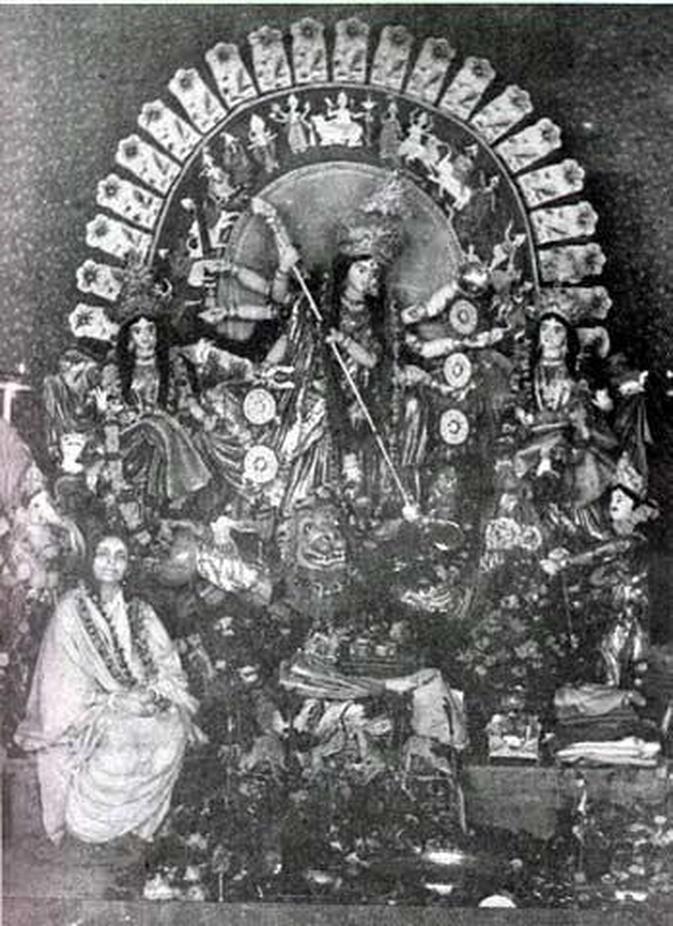 Sri Anandamayi Maaa Sri Anandamayi Maaa Mothers Durga, Lakshmi and Saraswathi dwell in your own heart and not elsewhere. They represent the three potencies in man, Ichcha Shakti, will power; Kriya Shakti, the power of purposeful action and Jnana Shakti, the power of discernment. Saraswathi manifests in man as the power of speech or Vaak; Durga is present in the form of dynamism and Lakshmi manifests as will power. The human body indicates Kriya Shakti; the mind is the repository of Ichcha Shakti and the Atma is Jnana Shakti. The menacing manifestations of Durga are the rajasic qualities like anger and hatred. Power of Saraswathi extols the Divine and pleasing vibrations in spiritual songs and mantras. The pure qualities that arise in man such as compassion and love, forbearance and sympathy are derived from Lakshmi. When you worship one, you are worshiping all three as they are manifestations of the Supreme Mother Devi embedded in each hearts. One is to recognize the powers within and develop respect for them. All that is needed is to turn the vision inwards to experience the Divine within. Om Yogi Ananda Saraswathi 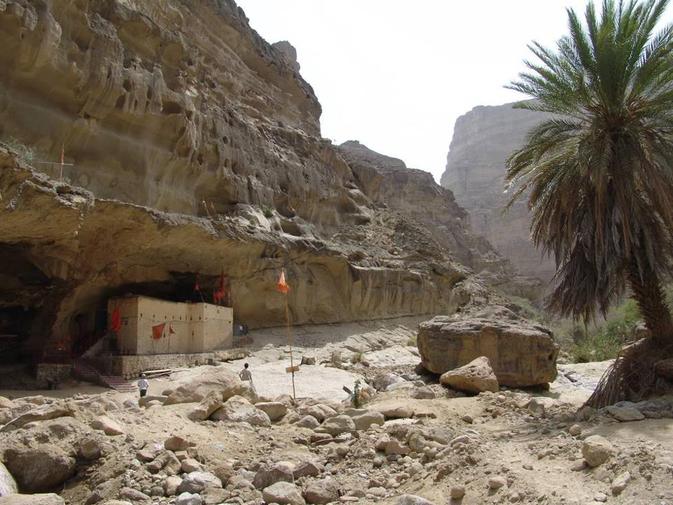 Shakti Peeth - Hinglaj (Or Hingula) Hinglaj is an important Hindu pilgrimage place in Balochistan, Pakistan and Kuldevi of Kshatriya Bhavsar Community. It is situated in Balochistan province about 250 km north-west of Karachi. The site has become a beacon of proof of the Baloch secular religious attitude particularly towards the Hindu pilgrim’s even though the majority of the populace are Muslims. The autonomous region which has sought separation from the Pakistani Central government since the division of Hindustan (India). Yet since 2001 it has been associated with the NWFP and FATA regions as a hotbed for religious extremism to the dismay of the locals. In 2006 the leader of the Baloch National Front, Sardar Akbar Khan Bugati was assasinated by the Pakistani army whom have faced an increase in underground insurgency that the Pakistani government alleges to be masterminded from Afghanistan. On the other hand the area of Balochistan is also significant of Indo-Pakistani relations, the government insisted that the Baloch insurgency is supported by India to circulate influence in the region and that it is also home to countless Indian spooks and Afghan taliban, yet places like Hinglaj Mandir indicates the religious tolerance of the Baloch state. To still the divine dance, Tandava, of Lord Shiva following the death of Dakshayani, Lord Vishnu scattered the remains of her embodiment over various places of the Indian subcontinent. It is said that the head fell at Hingula or Hinglaj and is thus considered the most important of the 51 Shakti Peeths. At each of the Peeths, Bhairava (a manifestation of Shiva) accompanies the relics. The Bhairava at Hinglaj is called Bhimalochana, located in Koteshwar, Kutch. The Sanskrit texts mention the part as 'Brahmadreya' or vital essence. In the Ramayana, after slaying Ravana, Lord Ram came to Hinglaj to atone for his sin of 'Brahmhatya' (killing a Brahmin). Ravana was a Brahmin and a great devotee of Lord Shiva and Durga. Lord Ram meditated at Hinglaj as it was a very important shrine. The mantra or incantation for Devi Hinglaj is attributed to Saint Dadhichi, an important saint in Hindu theology. The mantra is : ॐ हिंगुले परमहिंगुले अमृतरूपिणि तनुशक्ति मनः शिवे श्री हिंगुलाय नमः स्वाहा OM HINGULE PARAM HINGULE AMRUTRUPINI TANU SHAKTI MANAH SHIVE SHREE HINGULAI NAMAH SWAHA Translation : "Oh Hingula Devi, she who holds nectar in her self and is power incarnate. She who is one with Lord Shiva, to her we pay our respects and make this offering (swaha)." Yet another incarnation: ब्रह्मरंध्रम् हिंगुलायाम् भैरवो भीमलोचन: | कोट्टरी सा महामाया त्रिगुणा या दिगम्बरी || BRAHMARANDHRAM HINGULAAYAAM BHAIRAVO VIMALOCHANAH KOTTARI SAA MAHAAMAAYAA TRIGUNAA YAA DIGAMVARI Translation : "Mahaamaayaa (Queen of Illusions) who represents the supreme virtue by reigning over all three virtues, has Bhimalochana as her Bhairava, and derides the worldly trappings by dancing naked, resides in this cave of Hingula that enshrines her sacred head." Shrine's mark The shrine is recognised by a mark which resembles the sun and the moon. This mark is upon a giant boulder at the top of the hill containing the cave. It is believed that Lord Ram created this mark with the strike of his arrow after his penance ended. From Hinduism (forgotten facts) on facebook 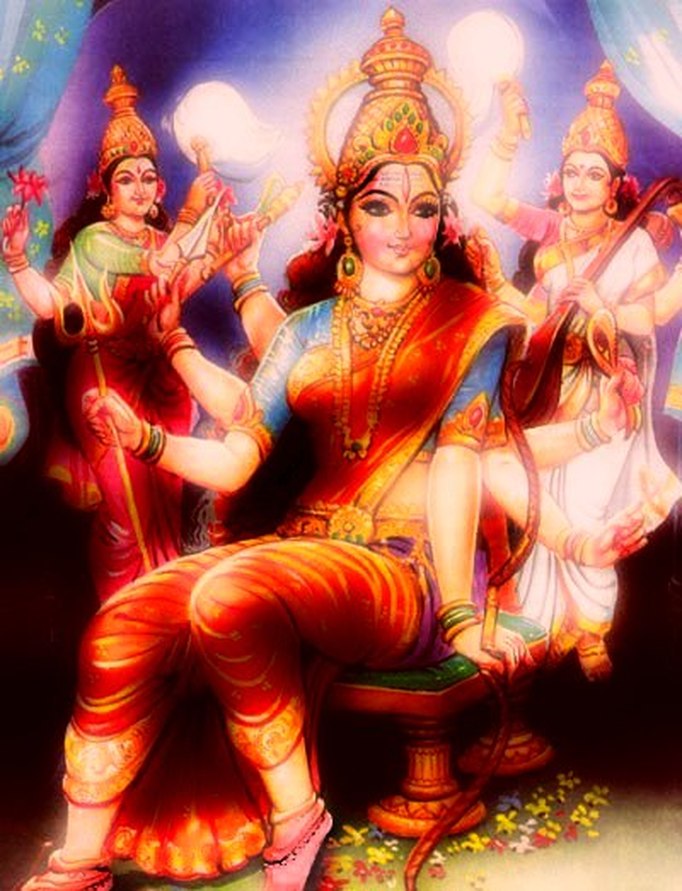 Shri Raja Rajeshwari Ashtakam with English Translation: Ambha sambhavi chandramouli rabhala aparna uma paarvathii Kaali haimavathi shiva thrinayanaa kaathyayani bhairavi Savithri navayowvana subhaghari saam rajya lakshmi pradha Chitrubhi paradevatha bhagavathi sri rajarajeshwari 1 O Shambhavi! Mother Amba, You are adorned with a crescent moon on forehead, You do not eat even leaves as food in fasting, You are known as Parvati, Kali, Haimavati and Shivaa, You have three eyes, You are known as Katyayani, Bhairavi and Savitri, You are forever young, You bestow auspiciousness, You bestow kingdom and wealth, You are eternal bliss, You are above all, You are the Goddess, and You rule the Lords as Rajarajeshvari||1|| 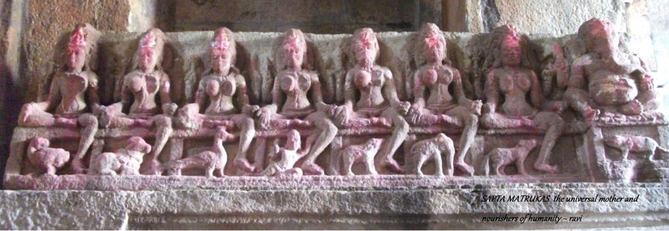 SAPTA Matrikas ~ "The Seven Mothers" are a group of Hindu goddesses who are always depicted together. Since they are usually depicted as a heptad, they are called Saptamatrikas (Sanskrit: saptamātṝkās, सप्तमातृका, "seven mothers"): Brahmani, Vaishnavi, Maheshvari, Indrani, Kaumari, Varahi and Chamunda or Narasimhi. However, they may sometimes be eight (Ashtamatrikas: ashtamātṝkās, अष्टमातृका, "eight mothers"). Whereas in South India, Saptamatrika worship is prevalent, the Ashtamatrika are venerated in Nepal. The Matrikas assume paramount significance in the goddess-oriented sect of Hinduism, Tantrism. In Shaktism, they are "described as assisting the great Shakta Devi (goddess) in her fight with demons." Some scholars consider them Shaiva goddesses. They are also connected with the worship of warrior god Skanda. They represent the prodigiously fecund aspect of nature as well as its destructive force aspect. In the 6th century encyclopedia Brihat-Samhita, Varahamihira says that “Mothers are to be made with cognizance of (different major Hindu) gods corresponding to their names.” In Matsya Purana, Shiva had created seven Matrikas to combat the demon Andhaka, who had the ability to duplicate from each drop of his blood that falls from him when he is wounded. The Matrikas drink up his blood and help Shiva defeat the demon. After the battle, the Matrikas begin a rampage of destruction by starting to devour other gods, demons and peoples of the world. Narasimha, Vishnu's man-lion incarnation, creates a host of thirty-two benign goddesses who calm down the terrible, fire-breathing Matrikas. Narasimha commanded the Matrikas to protect the world, instead of destroying it and thus be worshipped by mankind. At the end of the episode, Shiva's terrible form Bhairava is enshrined with the images of the Matrikas at the place where the battle took place. This story is retold in Vishnudharmottara Purana.Vishnudharmottara Purana further relates them with vices or inauspicious emotions like envy, pride, anger etc. Rigveda (IX 102.4) speaks of a group of seven Mothers who control the preparation of Soma. 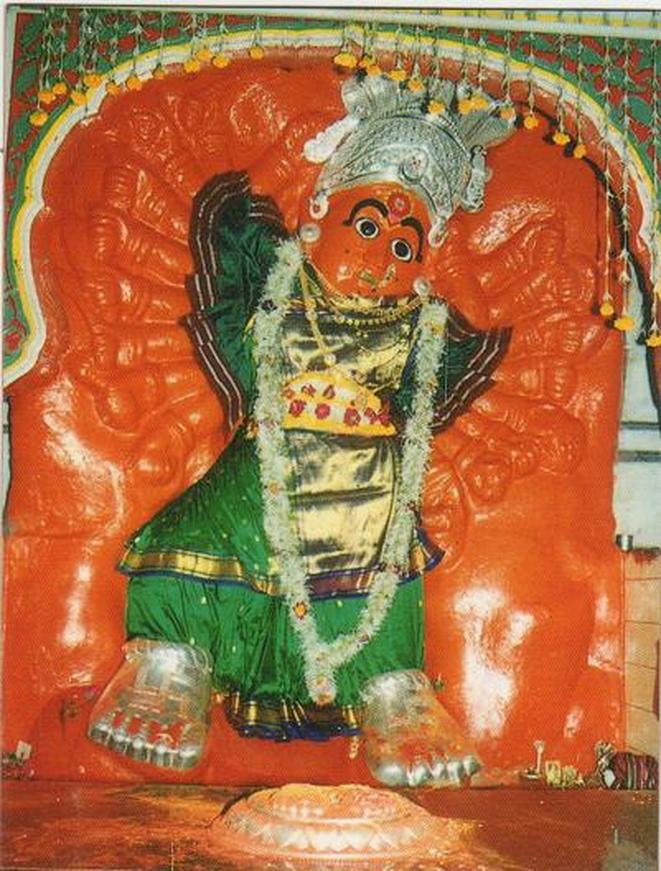 Shakti Peeth - Saptashrungi Saptashrungi or Saptashringi is a site of pilgrimage situated 60 kilometers from Nashik. According to Hindu tradition, the goddess Saptashrungi Nivasini dwells within the seven mountain peaks. (Sapta means seven and shrung means peaks.) It is located in Nanduri, Tal:-Kalwan a small village near Nashik in India. Devotees visit this place in large numbers every day. The legend This temple is one among the 51 Shakti peethas located on the Indian subcontinent. The Devi is said be swayambhu (self-manifested) on a rock on the sheer face of a mountain. She is surrounded by seven (sapta in Sanskrit) peaks (shrungain Sanskrit), hence the name: Sapta Shrungi Mata (mother of the seven peaks). The image of the Devi is huge — about 10 feet tall with 18 hands, holding weapons like: String of Beads Battle Axe Mace Arrow Thunderbolt Lotus Bow Water Pot Cudgel Lance Sword Shield Conch Bell Wine Cup Trident Noose Spinning Disc (Sudarsana Chakra) The idol is always coated with sindoor, which is considered auspicious in this region. She is also known as Mahishasur Mardini, the slayer of the demon Mahishasur, who took the form of a buffalo. At the foot of the hill, from where one starts climbing the steps, there is the head of a buffalo, made in stone which is believed to be a demon. Mahishasur Mandir It is believed that the Devi Mahatmya, a sacred book which extols the greatness of Devi and her exploits, was composed at this place by the sage Markandeya. He performed rigorous penance on a hill opposite the one where the Devi resides; it is now named after him. The temple, which is on the side of the cliff, is 1230 meters above sea level. There is an old path with steps cut out of the mountain, which starts right at the foothills at Vani and goes all the way to the mountain. A motorable road has been built, which goes up to an altitude of 1150 meters. From this place one has to climb around 500 steps to reach the shrine, which takes about 45 minutes. It is said that there is one flag which is said to be at top of the mountain where Saptashrungi mata's temple is situated. This road is only known by one person that is A poojari and no one else. Before his death he gives information of this hidden road to another poojari and this goes on. But only one poojari knows the way. References in ancient texts and legends of Hinduism Saptashrung mountain was a part of the forest called Dandakaranya mentioned in the Ramayana. It is mentioned that Lord Rama, along with Seeta, had come here to pray to Amba and seek her blessings. Among the ancient seers, Sage Markandeya (who was called the Bhakta Markandeya and was the author of Devi Mahatmyam, the book containing 700 slokas praising and the life of the goddess Amba) and Sage Parashara ( son of Sakthi & grandson of Vasistha) completed their tapascharya (a multi-year period of meditation and prayer in solitude, a kind of penance, to seek the ultimate truth; in much of Hindu mythology, this is done to seek a meeting with God) at or near Saptashrungi. Sant Dnyaneshwar, in Dnyaneshwari, his commentary on the Gita, mentions that his father, Vitthalpant, had also visited Saptashrungi. At a later point, Nivruttinath, the elder brother of Dnyaneshwara, is said to have visited Saptashrungi, and then moved on for his Samadhi at Tryambakeshwar near Nashik.[citation needed] (Samadhi means deep meditation. It can also mean a tomb of someone (usually a holy being) revered by masses. "Taking a Samadhi" means voluntarily entering one's own tomb with the purpose of giving up life, considering life's aim fulfilled.) In Ashwin (Hindu calendar month) Shuddha Dhashami a big utsav (festival) is held at this place. Hindu forgotten fact on facebook 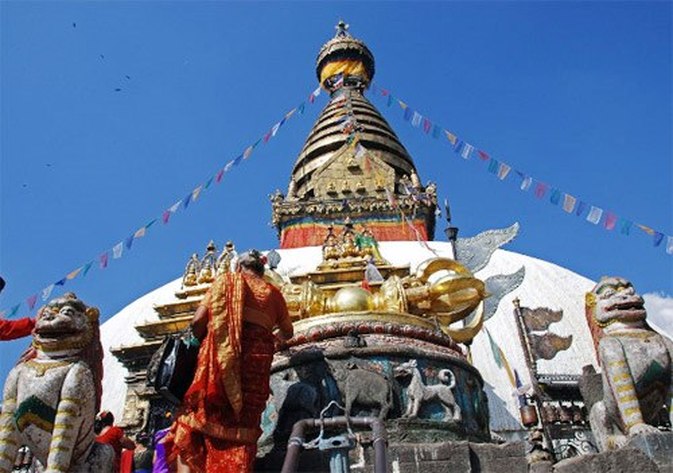 Shakti Peeth Gandaki Shakti Peeth to have known as the most famous pilgrimage for Hindus in India typifies to offer the salvation over their obstacles. Gandaki Shakti Peeth,located at Nepal, is dedicated to Goddess Gandaki existing as the most religious river of Nepal, having the Shaligrams-stones (form of Lord Vishnu) in her depths. Whereas, Goddess Gandaki (form of Goddess Shakti) and Lord Chkrapani (form of Lord Shiva) in Gandaki Shakti Peeth are meant to bestow the divine grace to content the lives a lot, Lord Vishnu, in form of Shaligrams, has brought up to Nepal come well-known all over the the country. History: Gandaki Shakti Peeth as one of the saintly embodiments devoted to Goddess Shakti has its history interesting. Meaning that Goddess Shakti’ right cheek feel where Goddess Gandaki river appears on. As the history is considered of Gandaki River that the Shaligrams (form of Lord Vishnu) as fossil-stones in the Gandaki-River are found as the boon to Goddess Gandaki to have it in its depth. The region where Shaligrams are found is also known as Shalgrams. Here, the Shaligrams region is in Mustang and River Gandaki basin, including the famous Kali-Gandaki river, Muktinath, Damodar Himal, Damodar Kunda, Devghat, etc. Indeed, Gnadaki River is fulfillment of sprititual attendance. 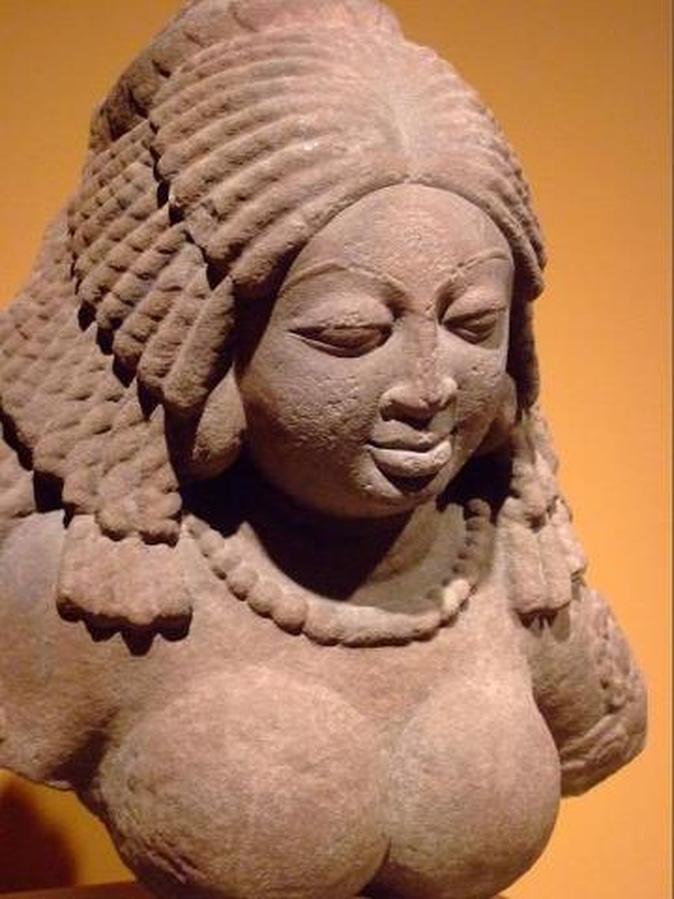 MOTHER GODDESS WORSHIP: This is very broad subject but let us see if we can coherently summarise the basic points. This is as brief as one can get to on this great subject of Shaktism . ARUPA: Aspects of God are tersely described as Rupa – easily tangible form; Rupa-arupa – form, formlessness, the less tangible form and Arupa – formlessness absolutely intangible. Rupa is anything constrained by height, length and width dimensions within the fourth dimension being space. If one can see and touch, then it is the rupa-form. This includes spiritual forms which we visualize in the mind. Rupa-arupa are forms that are less tangible and not constrained by the four dimensions but does take up space. For example, light, sound, mental or spiritual space, feelings such as love and hate are rupa-arupa because it takes up space. These distinctions are essential to comprehend god mystically and for God realization PARASHAKTI: Is the unmanifest form, the original God Consciousness that pervades all existence. As such, Parashakti exists are Pure Consciousness from which all energy, intelligence and awareness arises. This cosmic energy is experienced and depicted as Divine Light, Pure Love, Pure Consciousness, Pure Space and Intelligence. It is Satchitananda, Bliss of formlessness. Then again, formlessness is the realm of Parabrahman which is Arupa, the third aspect of the Divine. ARDHANARI AND SHIVALINGA: are symbols that explain the mystery of God in his form and formlessness. For want of a word, let us state that these forms of the formless explain the ‘co-existence’ and relationship between Parashakti and Parabrahman. Shivalingam represents formless Parabrahman in worship; Parashakti is deified within Shivalinga in the most beautiful and unique way. The most common form of Parashakti as used in worship is Ardhanarishwara; a single deity encompassing both the male and female. Ardhanarishwarar depicts that Parashakti, can be realized or experienced when a seeker achieves a similar equilibrium of energies within himself or herself. Indeed spiritual disciplines when perfected bring about this equilibrium that leads the devotee to God Consciousness. KUNDALINI SHAKTI: As we all know that, God lies in all beings in both dynamic and inactive aspect. Inactive aspect of God is Supreme Soul and Active aspect of God is Adi Parashakti. In all living beings God's both activated and Inactivated form lies i.e. God is Omnipresent. As inactive form, God is there as Soul within us and in activated form God is there as Kundalini Shakti, the epithet of Adi Parashakti. The male right side represents the masculine energy of willpower known as the pingala nadi and the feminine energy of passion courses through the left side of the body, known as the ida nadi. These two energy currents flows within both men and women to varying degrees, depending on their personality. Ardhanari represents the perfect balance of masculine and feminine energies, a state of equilibrium of these energies. MANIFESTATIONS of PARASHAKTI: According to the Bhagavata Mahapurana, Adi Parashakti, the original Creator, Observer and Destroyer of the whole universe. Aum Shakti is used to describe the name of the goddess when she is without attributes. She is the ultimate Mother considered to be truly supreme spirit in Arupa form or Param Atman. In other words she is Nirguna Brahman. She manifests as Mahasaraswati, Malakshmi and Mahakali, possessing the three qualities of sattva, rahas and tamas gunas. This active energy is called Shakti referring to the power of the Trimurti; Brahma, Vishnu and Rudra. Parvati, the Goddess of Power is considered as the manifest or material form in her Saguna swarupa or human form. PARASHAKTI WORSHIP: More common depictions of Parashakti in worship are indirect application of elements such as light. Hence, light or deepam and arati are showed at various times to keep shrines lit during worship. This is not to keep the deity lit but to depict God as Parashakti. The use of incense too represents Parashakti; aroma represents the All-Pervasive attribute of Parashakti. GODDESS DEVI: In Srimad Devi Bhagwat Purana's 1st book and 4th chapter. Devi ordered and instructed the Trimurti. “I am Adi Parashakti, goddess Bhuvaneshvari. I am the owner of this universe. I am the Absolute Reality. I am dynamic in feminine form and static in masculine form. You are three parts of me. You all are my partial expansions. You have appeared to govern the universe under my jurisdiction. You are the masculine form of Absolute Reality, while I am the feminine form of that Reality. I am beyond form, beyond everything, and all the powers of God are contained within me. You will admit that I am the Eternally Limitless Power. I shall now assign each of you a task. She then commanded Brahma, Vishnu and Rudra to take up their individual assignments in the universe. She tells them that she will be by their sides as Shakti: Goddess Sharada as goddess of wisdom; Goddess Shri, the incarnation of Light and Mahakali, manifesting from Her left half, as consort of Shiva. She tells Rudra that it is due to her power that He becomes dynamic.” PARVATI MANIFESTATIONS: From thereon, for the benefit of bhaktas, Adhi Parashakti manifests as Saguna form of Mother Parvati. Each of the following goddesses are aspects of the true form of Parvati in their roles as Shakti or the supreme god-head, Shiva’s energy. UMA: Devi Gita suggests, it is suggested that before Parvati incarnation, Adi Parashakti appeared as Uma, Mountain Goddess born to the King of Himalaya and revealed divine, eternal knowledge to him. She explained herself as having neither beginning nor end and as being neither male nor female. She is the only, eternal truth. The whole universe is her creation and she is non-different from Para Brahman. She is one without second. SATI is an ancient loving wife Goddess. Sati was the daughter of Daksha Prajaapati a descendant of Bhrama. Sati had married Shiva against the wishes of her father. In Satya Yuga, the vain Daksha performed a yagna to insult Siva. Daksha invited all of the gods and goddesses except his son in law Shiva. This did not deter Sati from attending the yagna against Shiva's wishes. She does so as an uninvited guest and is insulted by her father. Unable to bear this insult, Sati is also Dakshayani. She immolated herself by her yogic powers. Siva hears of this and enraged at the insult and the injury. He went to the place where Daksha was performing his oblation, along with his ‘ganas’ or followers. The oblation site was destroyed. Siva through Veerabhadra and Bhardrakali, cut off Daksha's head and replaced it with that of a goat, as he restored him to life. Lord Shiva then carried the dead-body of Sati and started wandering all over the place like a lunatic. He was immersed with extreme grief. It was Sati as Aparna, the digambra ascetic that lured him out of his meditative state. The celestial Gods had blessed the Siva-Sati marriage. He would not function without her. The universe thundered with his angered footsteps of the cosmic Thandava. He ran about and danced in sadness and anger. The celestial dance of destruction shook all the three worlds. The Gods approached Lord Vishnu to intervene and relieve Siva of his grief and further destruction. Lord Vishnu brings this saga to an end by severing Sati’s dead body with his Sudarshan Chakra so that Siva could return to his sanity and go on his Trinity duties. Various organs and ornaments fell at different place. These places became famous as ‘Shakti-Peethas, in due course of time. Sati would be born as Parvathi at a later period as the daughter of Himavat. In these Peethas, Shakti manifests as Dakshayani, Parvathi or Durga. Bhairava refers to the corresponding consort, each a manifestation of Shiva. In all these temples the theological import of Sati’s story signifies her loyalty to Siva. SHAKTI PEETHS: Brahmanda Purana mentions of 64 Shakti Peethas of Goddess Parvathi. Mahapitha Purana states there are 52 Peethas attributed to Sati. Some are of the opinion that there 108 Peethas. These locations are ambiguous. Some of the peethas are now non-existent. Of these, 18 are known as ‘Maha Shakti Peethas’ and hence Adi Shankara’s writing on the peethas is also known as Ashta Dasa Shakti Peetha Stotram. Shankara names the places and the Goddesses. It is generally agreed that Peethas at Kamakhya, Gaya and Ujjain are regarded to symbolise the important aspects of Shakti – Creation, Nourishment and Annihilation. Curiously the three Peethas lie in a perfectly in a straight line symbolising that annihilation of the universe would not fail. The Goddess is often associated both with Gauri-Parvathi, the benevolent goddess of harmony, marital felicity and longevity, with Durga, goddess of strength and valour, and with Mahakali, goddess of destruction of the evil. GAURI is the younger version of virgin Parvati. Goddess Gauri is one of the manifestations of Goddess Parvati. Indeed she appears to be Parvathi herself on a retrospect time scale. The common epithets for Parvathi are Uma and Aparna. In the Ramayana the name Uma is synonym for Mother Parvathi. In the Harivamsa, she is Aparna meaning One who took to sustenance. These are also correlative to Sati. Mother Parvathi is Shakti or the Divine Mother, appearing in many forms such as Durga and Kali also. In describing Parvathi’s complexion, she is addressed as Gauri, the fair goddess or as the dark Kali. Could one say that Gauri was indeed Mother Parvathi in her teens and its corresponding emotions and feelings? PARVATI: Parvati is an ancient mountain goddess, associated with the Himalayas. She is similar to, but not identical with, the mountain goddess Uma. In terms of her vibrant personality and relationship Lord Shiva, she also shares some aspects and attributes of Sati, Shiva’s first wife. Parvati is the mother Shiva’s children. She is more connected to their abode in the Kailash mountains. DURGA means the inaccessible or the invincible. Another meaning of "Durga" is "Durgatinashini," which literally translates into "the one who eliminates sufferings." The most common legend of Durga manifestation is the famed feat of killing the demon Mahisha who took the form of a bull and attacked the devas and gods. In this battle, Durga armed with the weapons of all the gods, none of whom could defeat the demon because he was immune to death at the hands of a male. So, she was the emanation of all the Gods. In all, Durga is a multi-faceted by being a member of the Kali- Sati- Parvati- Durga- Gauri- Ambika- Uma- Candi class of goddess, all of whom are formerly regional "great" goddesses later syncretized as aspects of the brides and consorts of Lord Shiva. She is the patroness of soldiers and bless their military weapons. In the rural setting, Durga is the ancient grain and battle goddess. NAVADURGA: Shakti is the very possibility of the Absolute’s appearing as many, of God’s causing this universe. God creates this world through Srishti-Shakti -creative power, preserves through Sthiti-Shakti - preservative power, and destroys through Samhara-Shakti - destructive power. Shakti and Shakta are one; the power and the one who possesses the power cannot be separated; God and Shakti are like fire and heat of fire. The Navadurgas are Goddesses Sailaputri, Brahmacharini, Chandraghanta, Khusmanda, Skandamata, Katyayani, Kalaratri, Mahagauri and Siddhiratri. SAPTA MATRIKAS: The Varaha Purana, stating them to be eight in number by including Goddess Yogeswari. They represent eight mental qualities which are morally wanting: 1.Yogeswari – kama or desire; Maheswari – krodh or anger; Vaishnavi – lobha or coveatness; Brahmani – mada or pride; Kaumari – Moha or illusion; Indrani – Matsarya or fault finding; Yami (Chamunda) – tale bearing and Varahi – asuya or envy. The Sapta-Matrikas portray beautiful allegory. Siva is the spirit of Vidya, knowledge. Andhaka represents, ignorance or the darkness of of Avidya. The more Vidya attacks Avidya the more it tends to arise and increase. KALI: The Devimahatmya, quite correctly, states that Mother Durga pervades the cosmos and creates, maintains, and periodically destroys it in accord with the rhythm of Hindu cosmology. When there is adharma and cosmic balance is threatened, Mother manifests in different forms to be the upholder of dharma. In that she wields weapons and even manifests the fiercer Kali form. Kali is typically shown as a deranged or wrathful half naked woman, and is often depicted dancing upon the corpse of her consort of Lord Shiva. She is multi-armed; her tongue protrudes; she wears a garland of skulls, holds a severed head in one hand, and brandishes a hooked blade called a kartri, along with other weapons. Yet to most of her devotees, she is a loving Mother, despite her ferocity. Kali means ‘black’ and is also the female form of the word ‘kala’ which means ‘time’. So she is also cremation-ground goddess who is the Mistress of Time. According to the Shiva Purana or Parvati based Puranas, Kali came into being when Shiva teased Parvati of her dark skin and called her blackie. In response, she undertook penance to shed her black skin and became effulgently light, the epithet Gauri or ‘shining’. KATYAYANI: In other accounts, Parvati's black skin did not take on life of its own as Kali but instead took on a life of its own as Katyayani, a kindly version of Kali, who rides upon a tiger or a lion, just like Durga, who arose from the emanations of all the gods. This is an attempt to synthesize Kali, Parvati, and Durga into one entity, while giving Parvati primacy. Amarakosha, the Sanskrit Lexicon states Katyayani as Goddess Parvathi’s second name. In the Dakshan’s yagna episode, Lord Siva addresses Parvathi as Karthiyayini. She is also known as Katyayani Gouri later manifesting as the fierce form of Shakti, including Bhadrakali and Chandi. Katyayani is first mentioned in the Tittiriya Aranyaka part of the Krishna Yajurveda. Details about Katyayani is also found in the Matsya Purana, Agni Purana and Vamana Purana. Indeed some scriptures suggest that Goddess Katyayani is just another name for Mahishasura Mardini Durga. DASAMAHAVIDYA: The spectrum of Mother Goddesses cover the whole range of Feminine Divinity. This encompasses fierce and horrific goddesses at the one end to ravishing beautiful and loving ones at the other end to give the meaning of Mahavidya: Maha – great, Vidya – Knowledge. They are Goddesses of Great Knowledge. The Mahavidya Mothers are Kali: the Eternal Night, the Goddesses of Time, Tara: The Goddess Who Guides through Troubles, Tripurasundari: She who is Lovely in the Three Worlds, Bhuvanesvari: She Whose Body is the World, Chinamasta: The Self-Decapitated Goddess, Bhairavi: The Fierce and Terrible, Dhumavati: The Widow Goddess, Bagalamukhi: The Paralysing Goddess, Matangi: The Outcaste Goddess and finally Kamala, the ever-beautiful Lotus Goddess. Tantra Sadhana involves tantric puja, rituals and sadhanas for worshiping the ten aspects of Mahavidya goddesses. Various yantra and mantra recitation are prescribed for their worship. This must be done under the guidance of a guru. Hara Hara Mahadeva (draft Mother Goddess Worship) by Yogi Ananda Saraswathi... so grateful for all his writings.. |
Trishula Sandra Das
Practitioner of Jyotish, Yoga Tantra, Ayurveda, Shakti Sadhana for 40 years. ~ VedicAstrologer ~ ~ Researcher East & Western Wisdom, Past Life Regression, Mysticism ~ ~ Mind Body Soul~ Believer in Love, Humanity, Peace, freedom & Soul Mates ~ Baul Scholar ~ ~ Qigong Master ~ ~ MOTHER ~ ~Photographer~ Archive
May 2022
Thanks to all Authors.
Categories
All
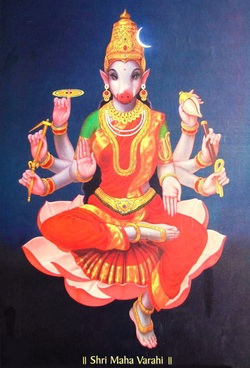
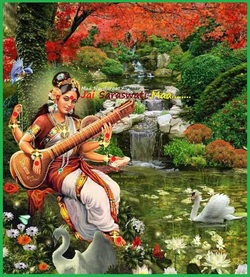
|
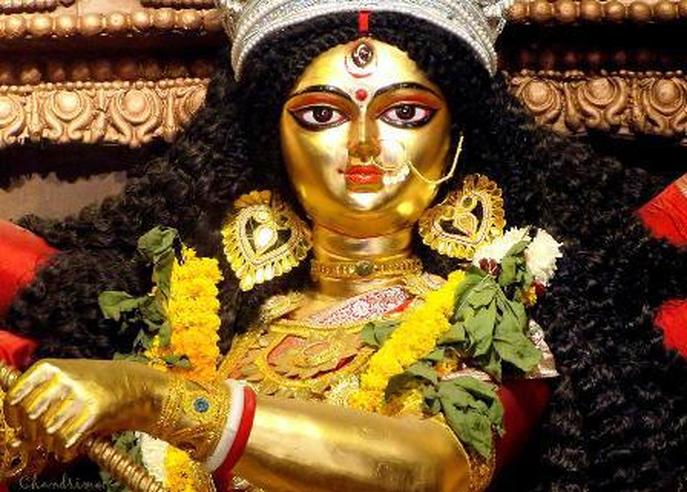
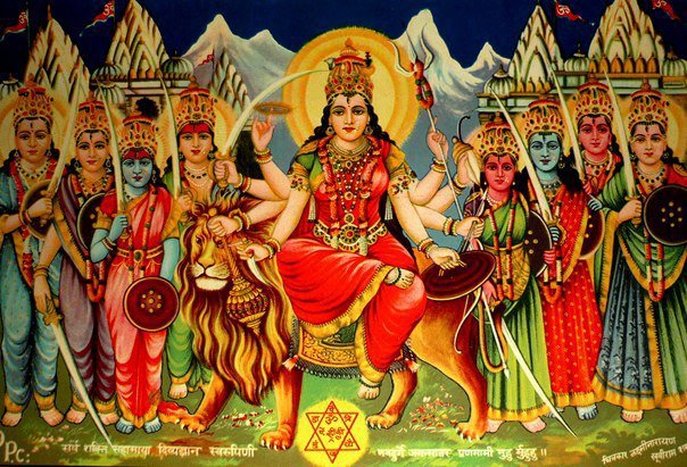
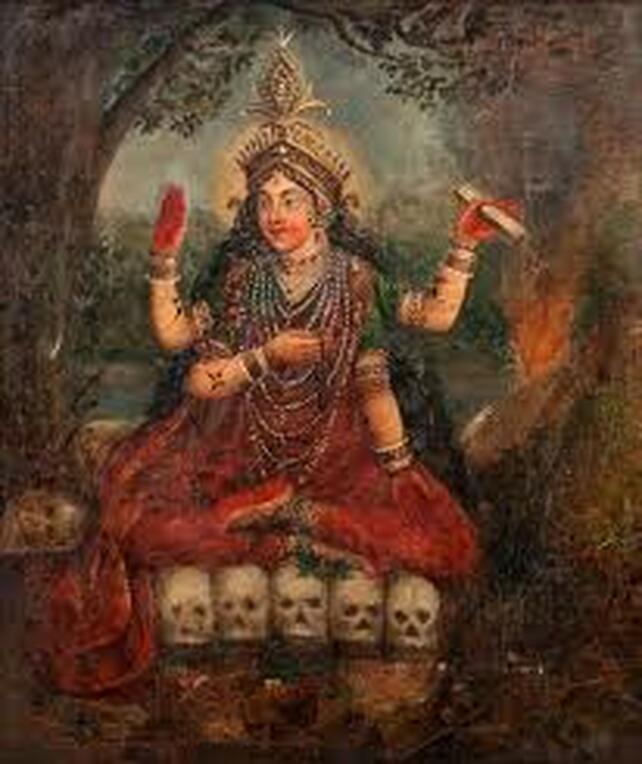
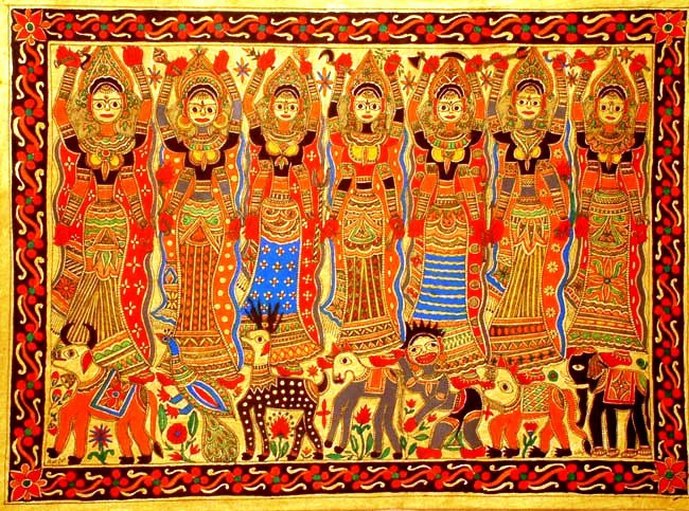
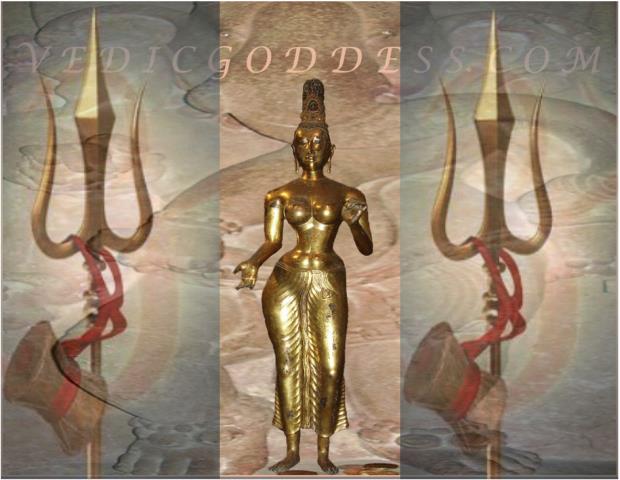
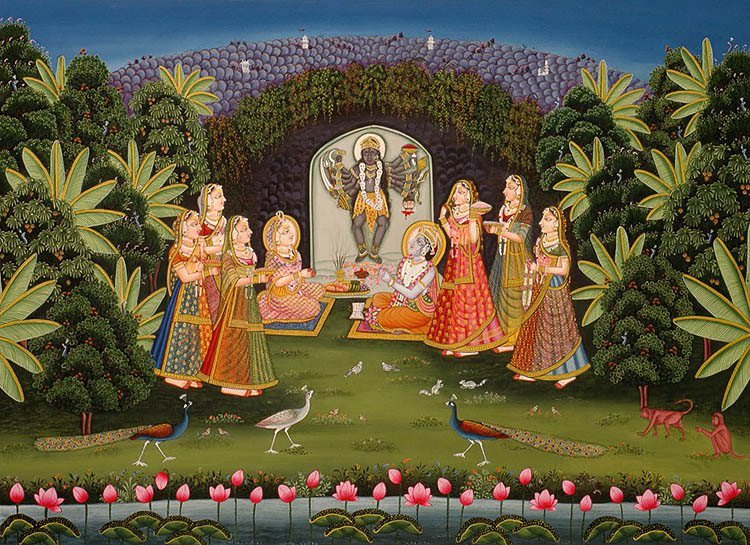
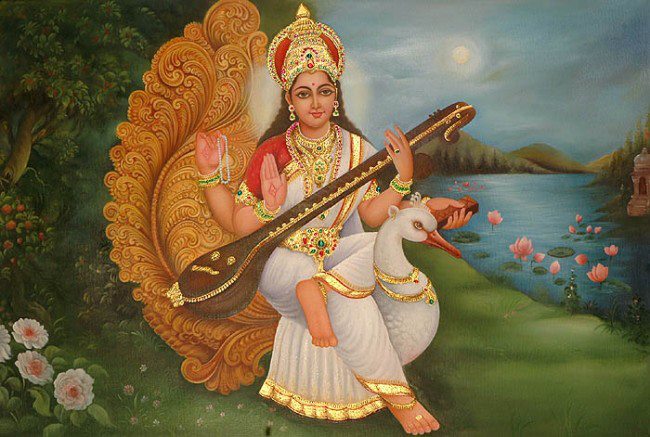
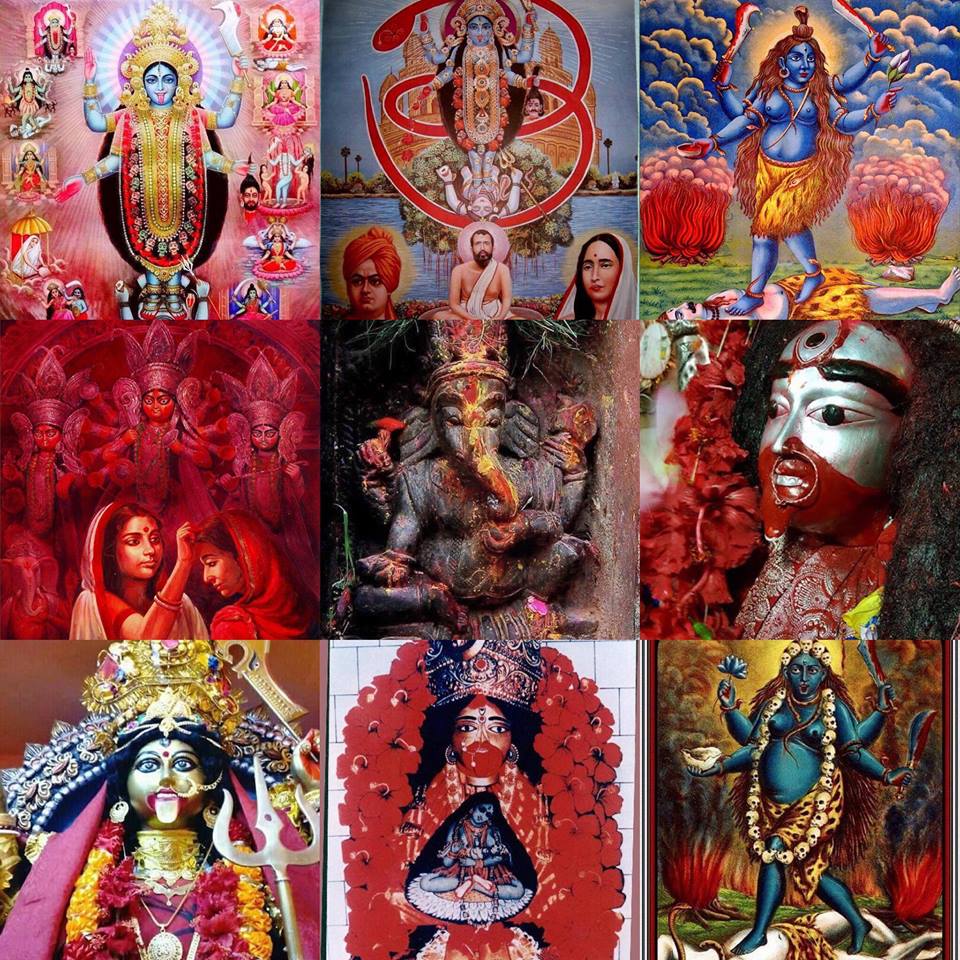
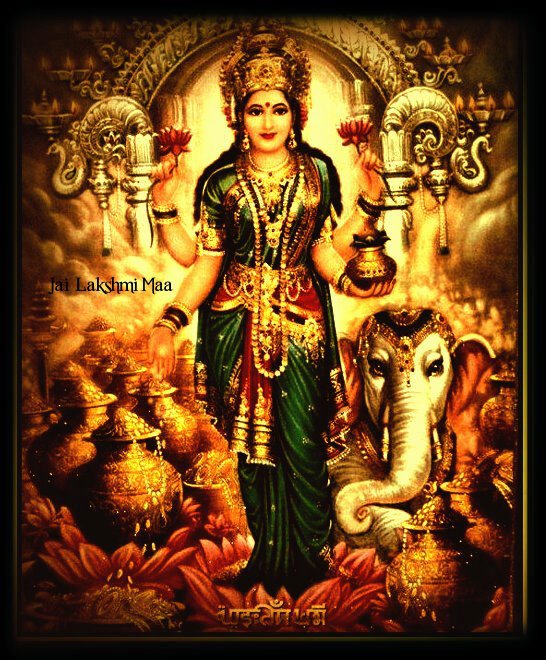
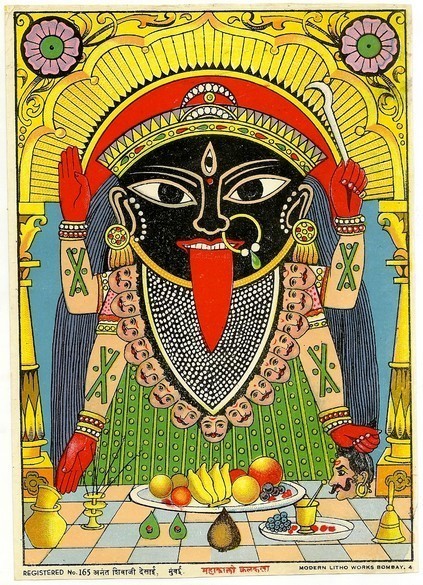
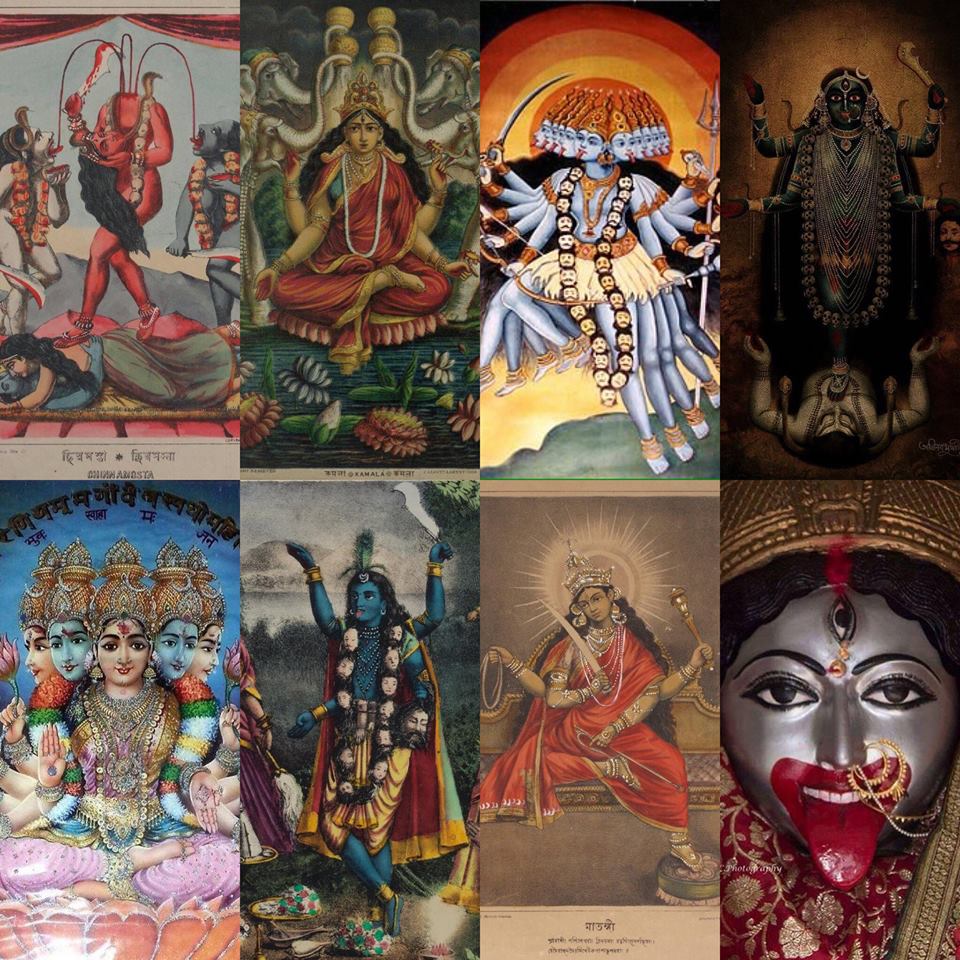
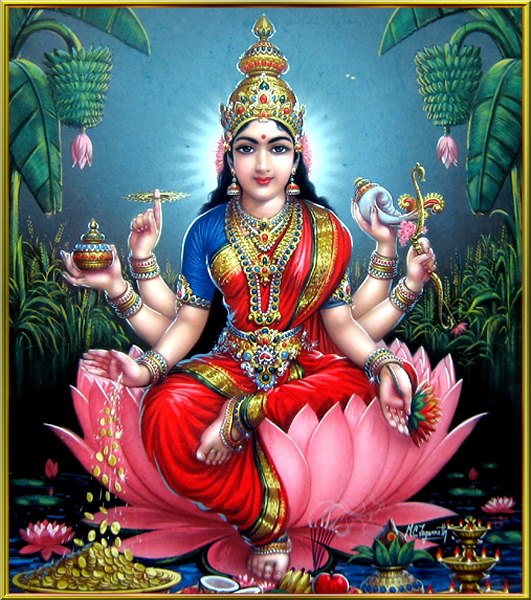
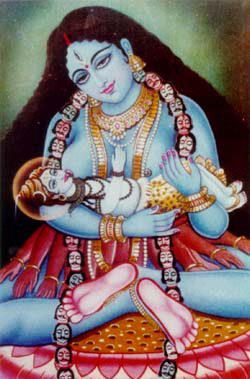
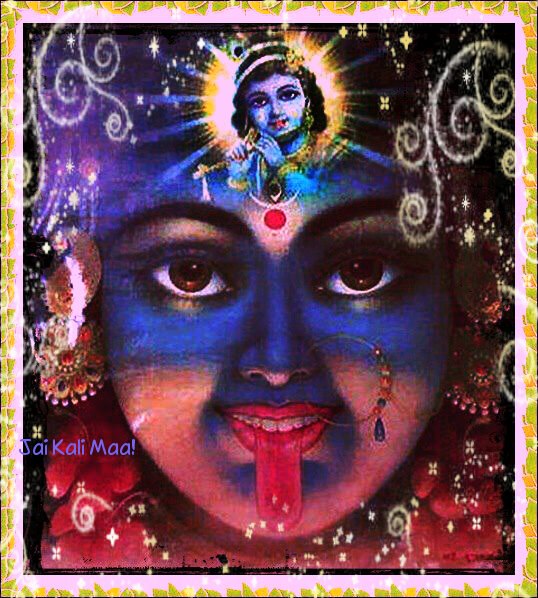
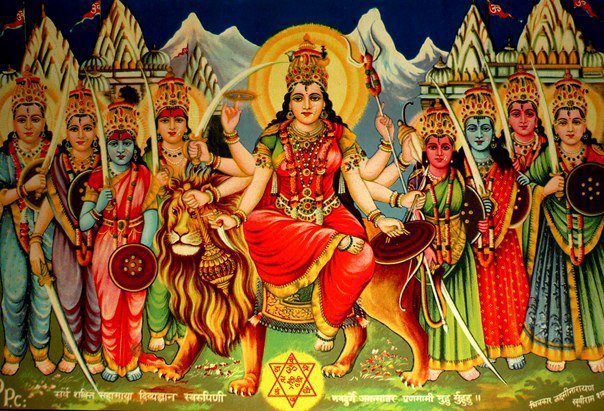
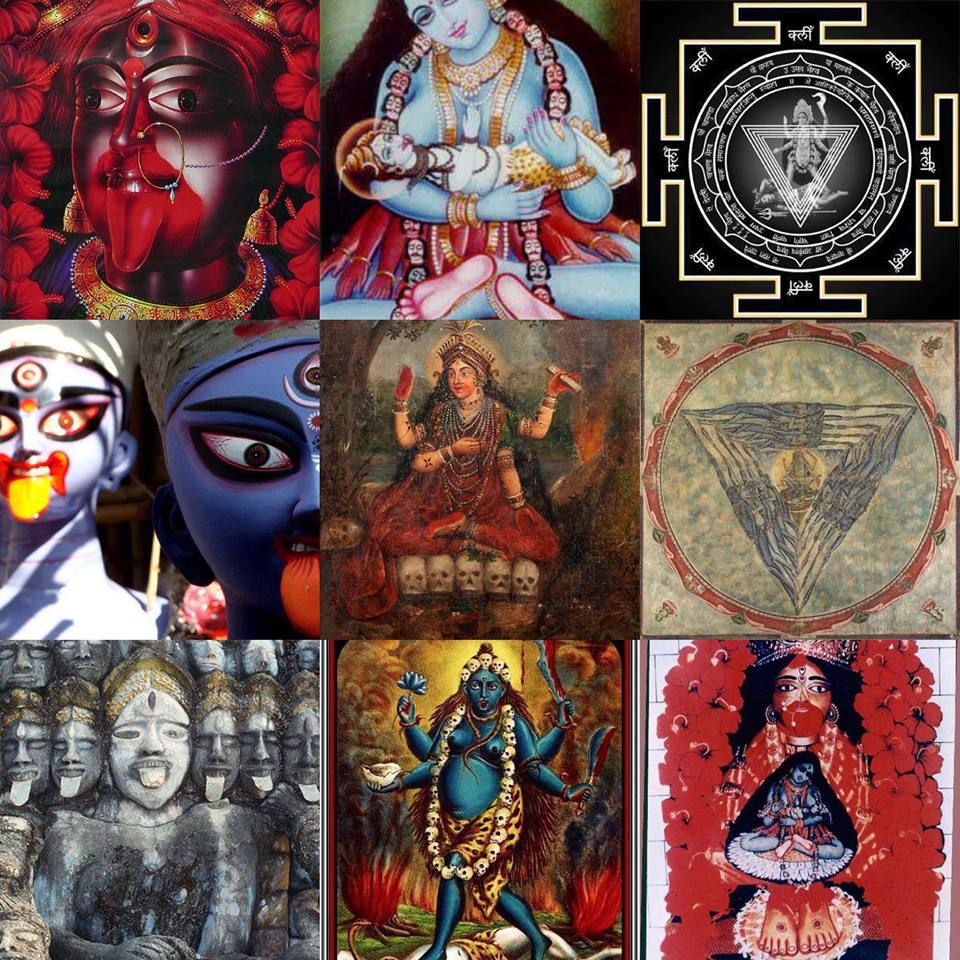
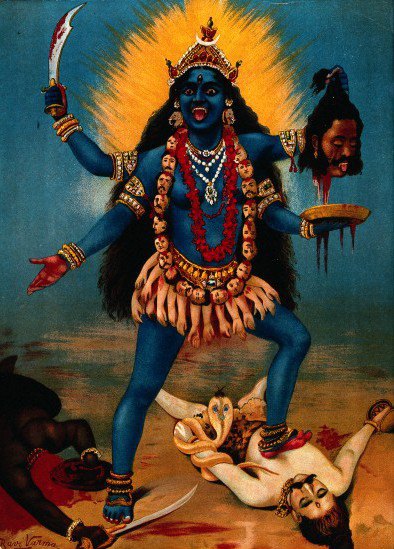
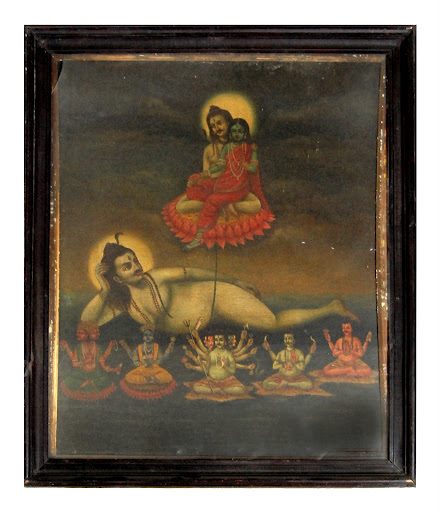
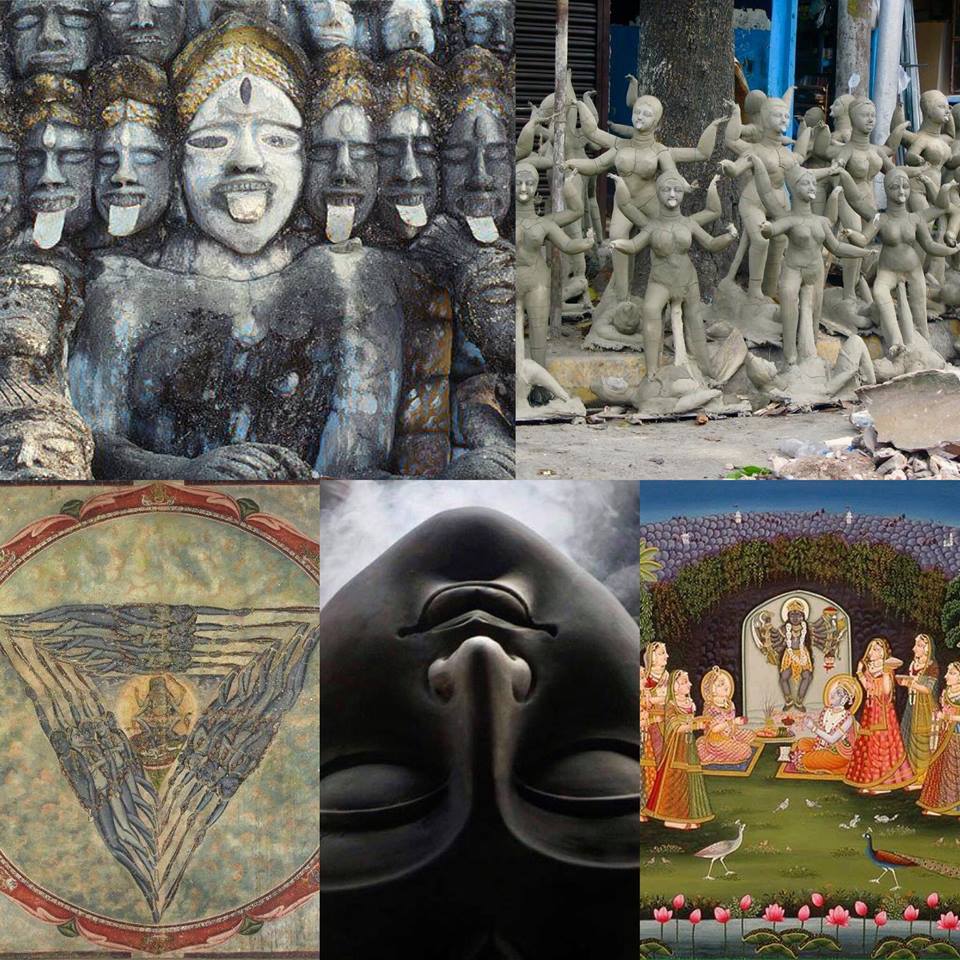
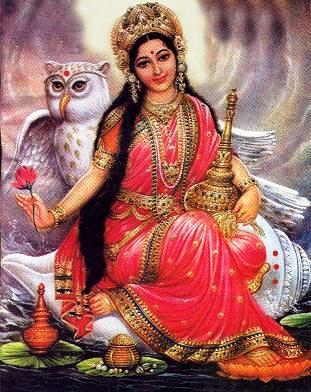
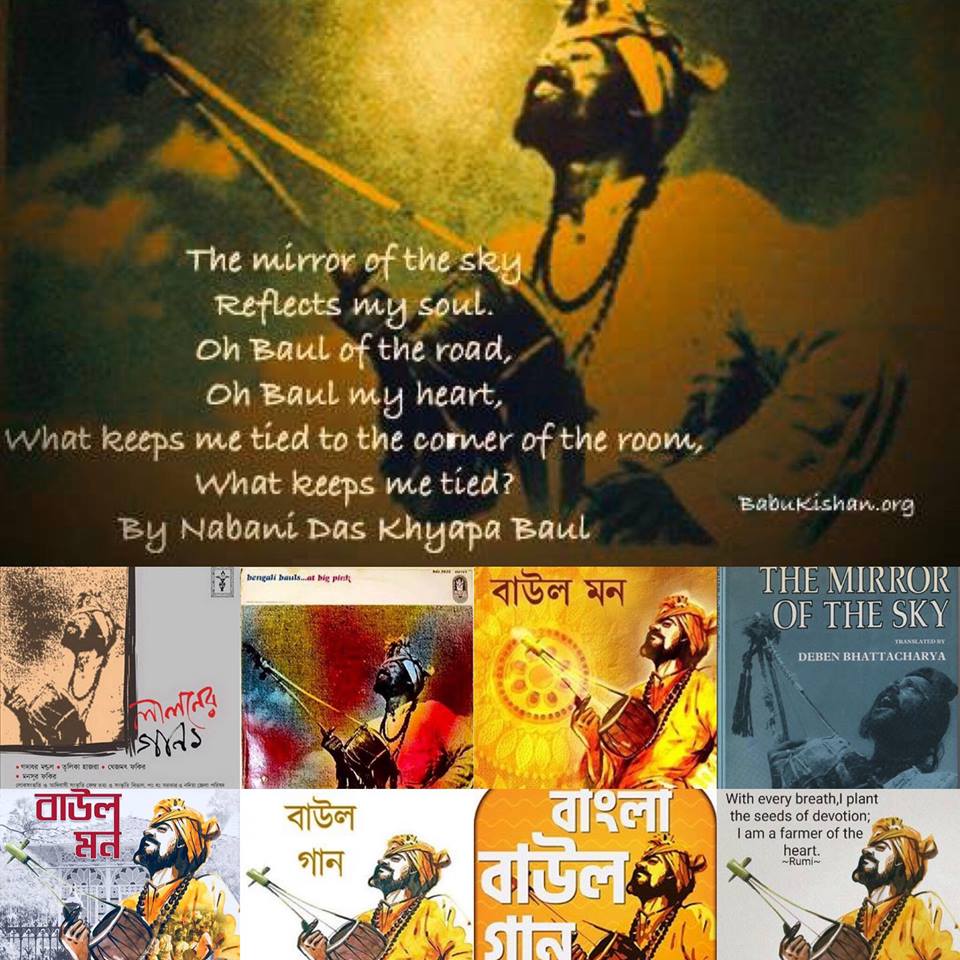
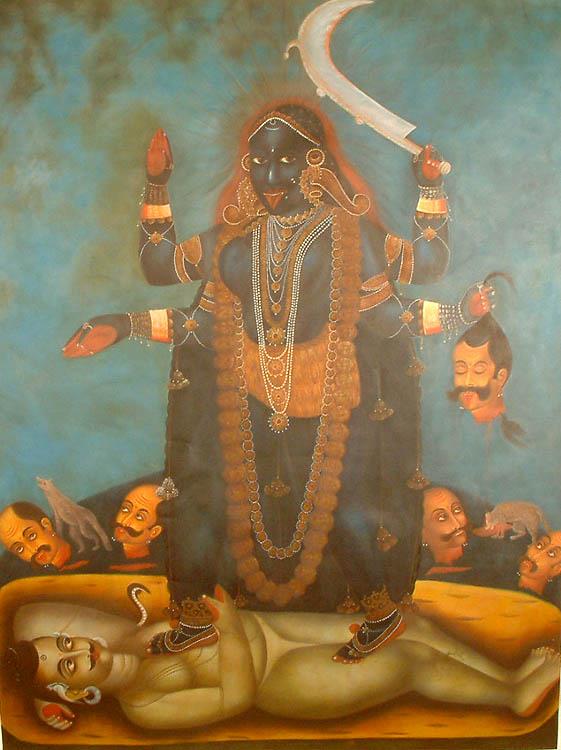
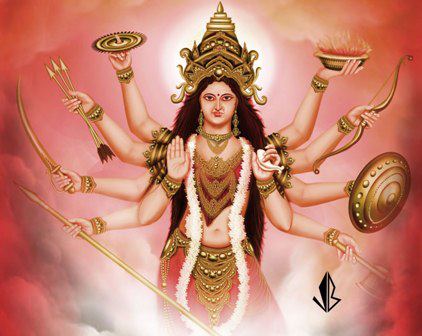
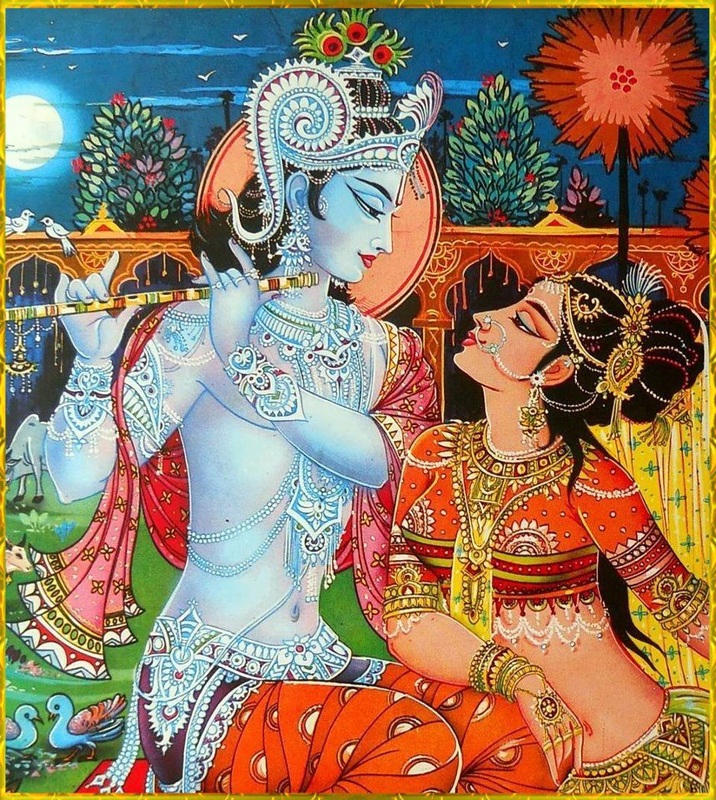
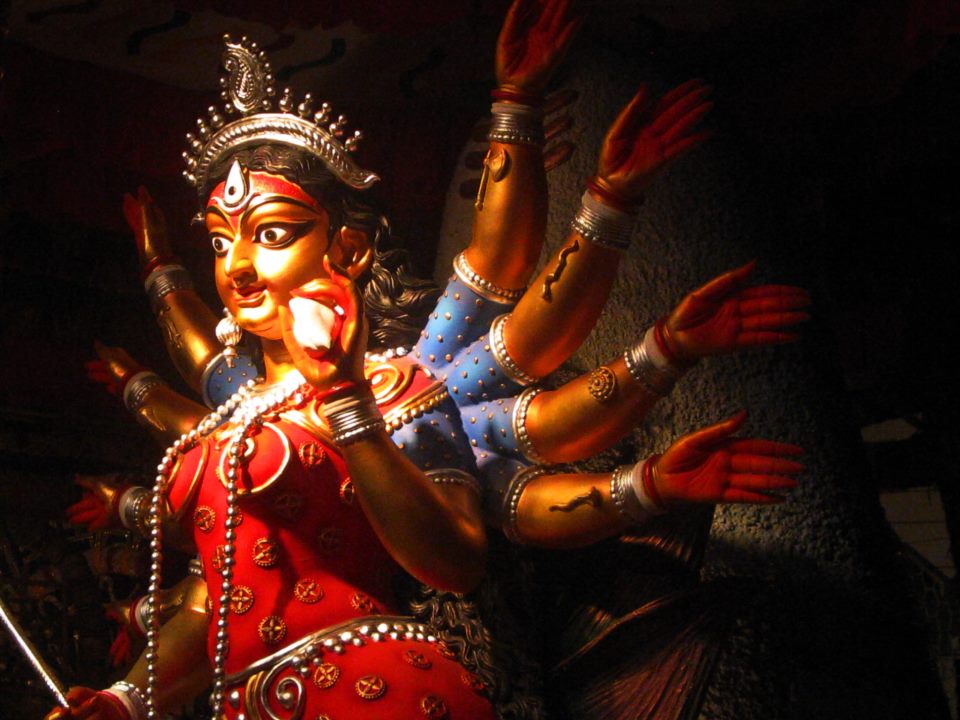
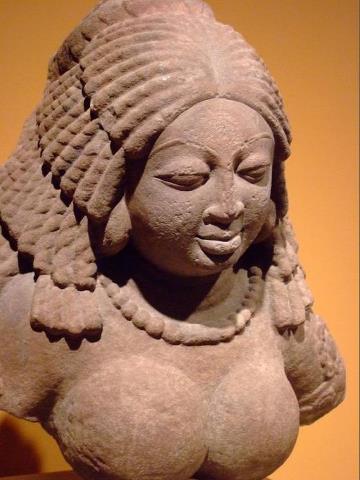
 RSS Feed
RSS Feed
